April 2020
The first Belted Kingfishers I photographed in the Wasatch Mountains this year were taken on April 24th. I’d driven up into the mountains to escape the news, the negativity and to enjoy a slow, relaxing trip into the high country and came back with lots of Belted Kingfisher and Uinta Ground Squirrel photos.
I was totally unaware on that April morning that I would be photographing a Belted Kingfisher family for several months. I also did not know that my time spent with them would be a soothing balm that quieted my anxieties so well. But here it is almost the end of the year and my hard drives from this spring and summer are filled with kingfisher photos.
Be forewarned, there are more photos in this single post than any other post I have done over the 10+ years I have had my blog on line. I followed and photographed an American Oystercatcher family for three and a half months and didn’t take nearly the number of photos of them that I did of this Belted Kingfisher family.
I’ve only posted a few of the photos I’ve taken of this kingfisher family so far, that is about to change.
These photos were taken on April 24th. This adult male may or may not be the adult male of the family you will see in the following images. There is really no way to tell but I suspect that due to the territorial nature and defensive behaviors of male and female Belted Kingfishers on their breeding territory that it is.
It would be several weeks and many trips up into the high country before I photographed another Belted Kingfisher. I’d hear them and see them way off in the distance.
*Throughout this post you can click on the smaller photos to view them at a larger size.
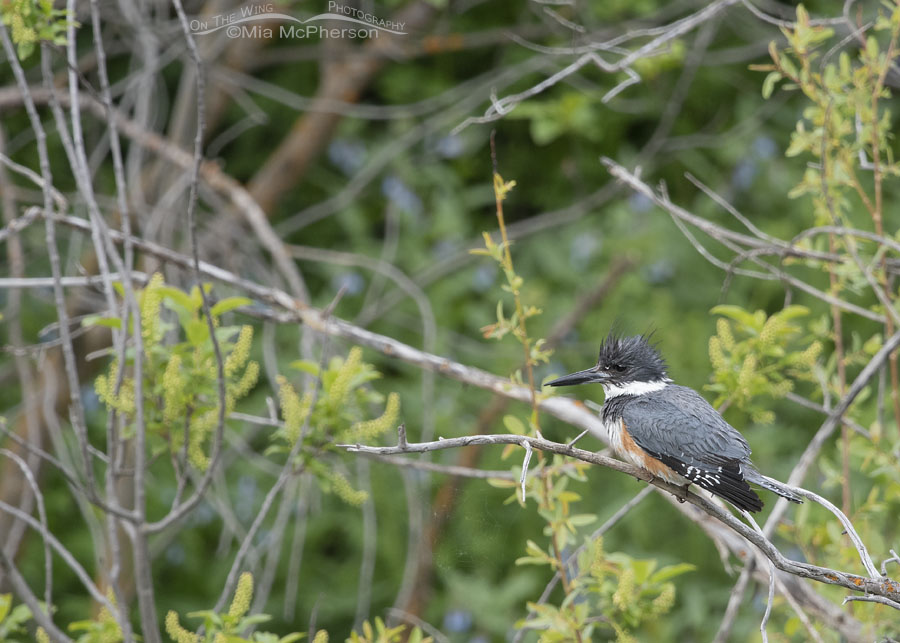
Adult female Belted Kingfisher on the other side of a creek
May 2020
A few weeks later I was able to photograph an adult female Belted Kingfisher when she flew in and landed on the opposite site of the creek. I hoped she would come in closer but on that day she didn’t. The female kingfisher looked wet, she may have already gone fishing that morning or she might have been perched where the mountain dew soaked her feathers.
This photo was taken on May 27th.
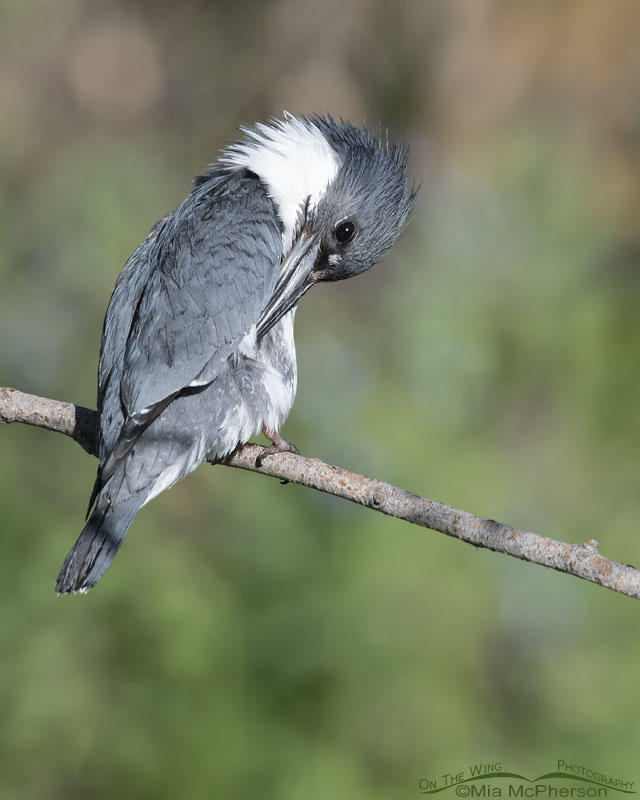
Adult male Belted Kingfisher preening session
On May 29th I saw the adult male Belted Kingfisher fly in to a tree behind me and once I got back to where I could see him clearly and in good light in the “mobile blind” I was able to take photos of him while he preened.
I could wish that there weren’t shadows on his rump and tail yet I was delighted to see him preening up close and I had a great view of his eye too.
When the male Belted Kingfisher moved that morning he selected a much more cluttered setting but he also gave me some great poses as he stretched his wings one at a time then stretched them over his body while simultaneously opening his bill.
I was delighted with all the different images I took of him despite the all of the messy branches. Besides, I am not just out there to photograph birds. I am also there to learn as much about them as I can.
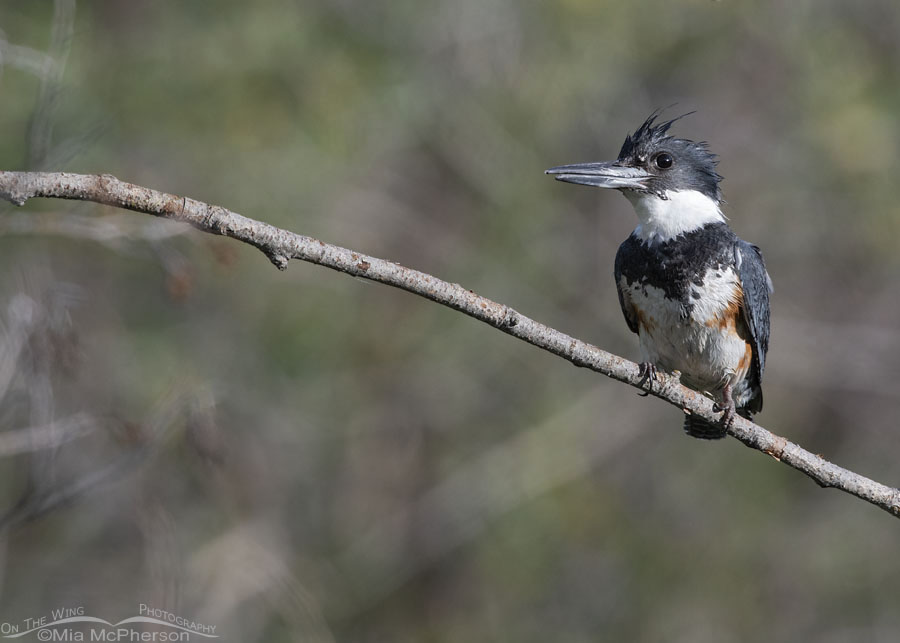
Adult female Belted Kingfisher with a shorter than normal lower bill
June 2020
The female Belted Kingfisher who was more colorful than the male because of her rusty red band on her belly also had another feature that made her a standout bird. Her lower mandible was noticeably shorter than her upper maxilla. It shows in the photo of her above but it is more remarkable in this photo.
The longer I look at the photos of this female the more convinced I am that it is the upper mandible that is abnormally long.
A friend and fellow photographer who also photographed this kingfisher family asked me if the female was a young bird because he had seen someone else say that she was. I explained that she wasn’t “young” and that she would be considered adult even if she had only hatched the previous year. Belted Kingfishers breed the spring the year after they have hatched and are considered adults at that age.
This photo and the one below were taken on June 2nd.
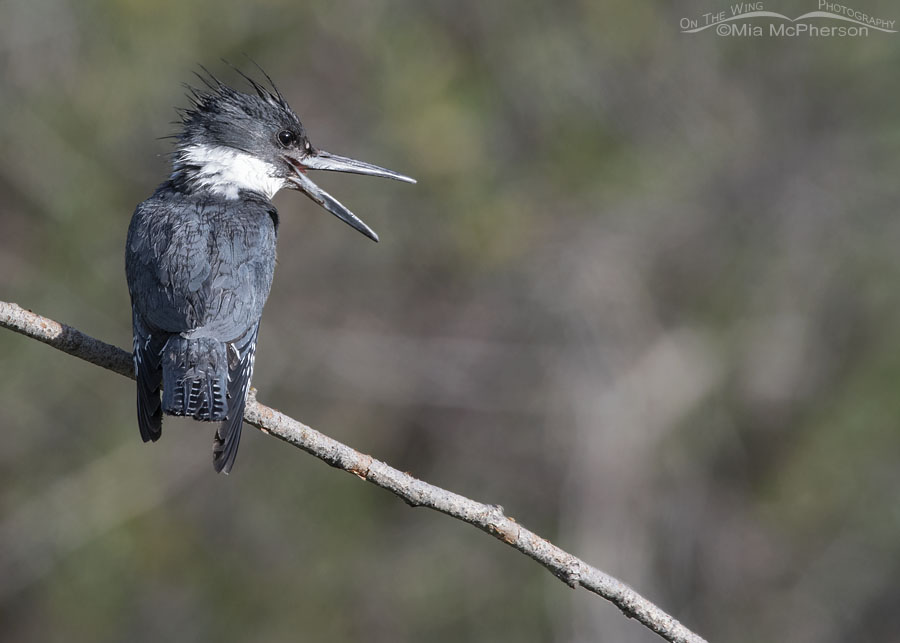
Adult female Belted Kingfisher with her bill open wide
I do wish that I would have had softer light when I photographed the female Belted Kingfisher. It wasn’t even 8 a.m. and the light had already begun to get harsh and contrasty.
It was the last time I took photos of the female though and I am still glad I got the images of her that I did. Perhaps I will see her again next year if she sticks around.
There were times that I went up into the mountains to the location where I saw these Belted Kingfishers that I didn’t see the birds. Sometimes I would just hear them.
Other times I would see them and they would perch in several different places which made me happy. In these photos of the male kingfisher taken on June 14th I was able to include blooming wildflowers in the background of one series of photos, the branches of a willow in another and a series of him on what was to become his favorite perch for several weeks.
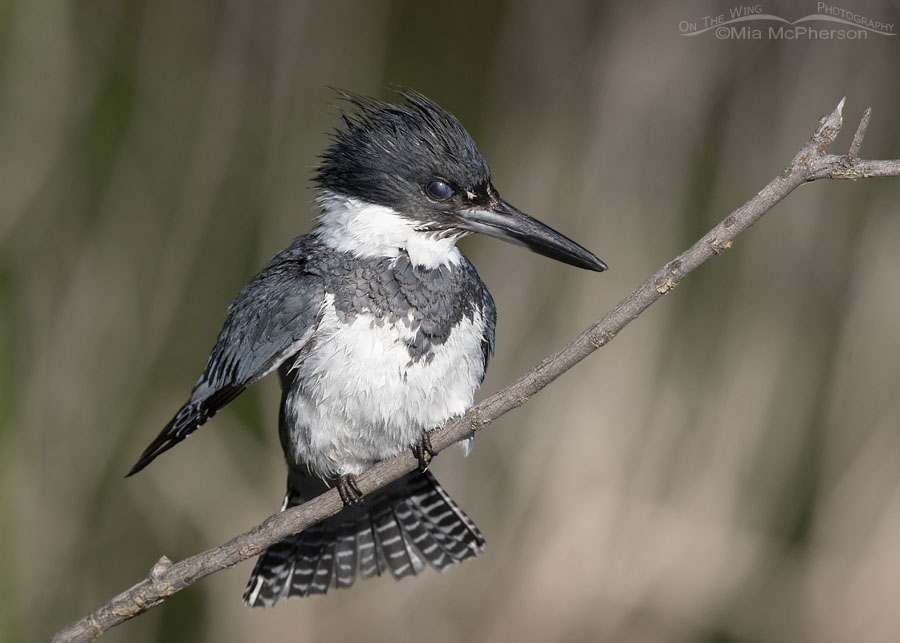
Shaking adult male Belted Kingfisher with nictitating membrane over his eye
On the 18th of June the male Belted Kingfisher flew in and landed on a branch right in front of me. It was the closest I’d had a kingfisher since I arrived in Utah. I had great eye level views of the bird as he perched on a branch that hung over the creek. Well, in this case I have an eye level view of his nictitating membrane as he shook out his feathers.
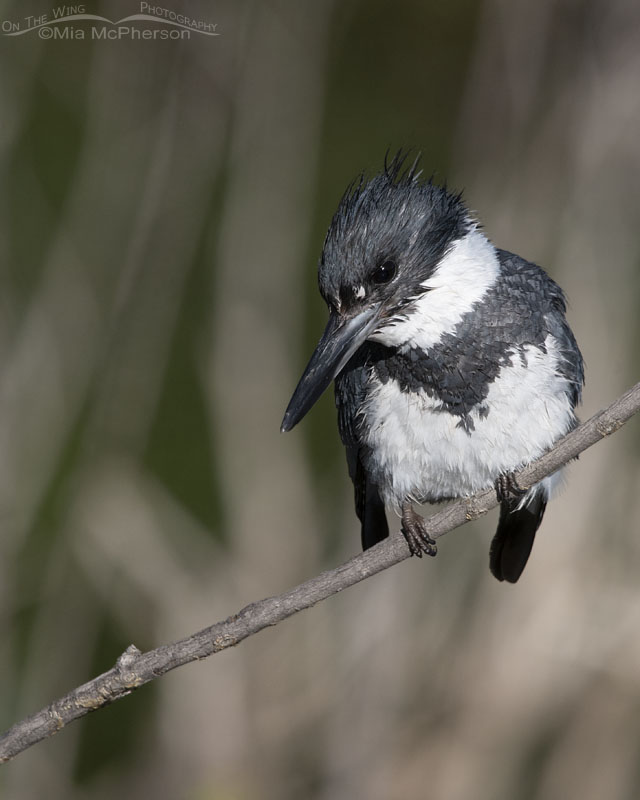
An observant adult male Belted Kingfisher
The kingfisher carefully watched the water in the creek below him as he scanned for fish. His intense look of concentration was impressive to me.
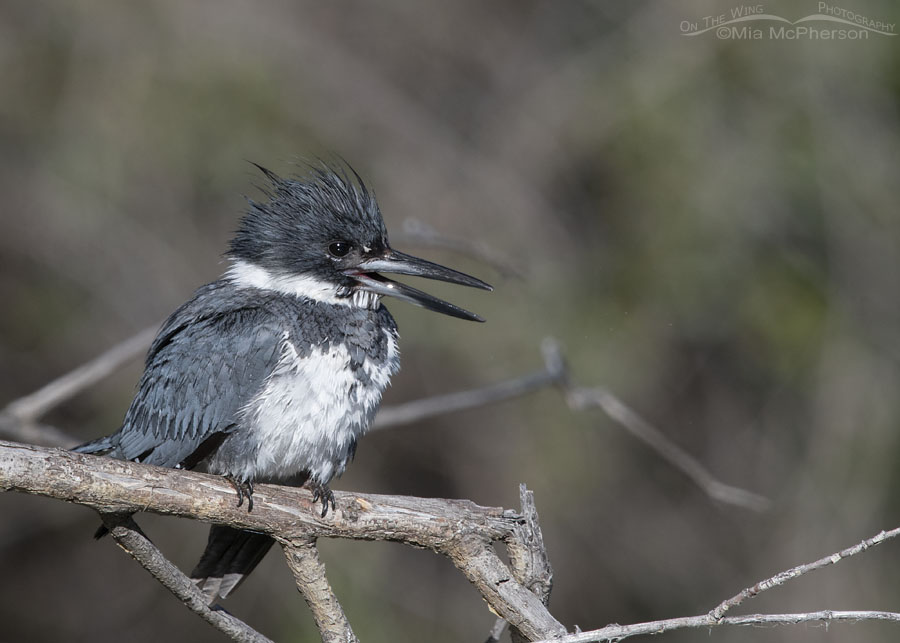
Male Belted Kingfisher calling while perched
A few times the male kingfisher made his rattling call during the time I photographed him on his preferred perch near the creek.
The Belted Kingfisher was extremely cooperative that morning and he didn’t seem bothered by the vehicles rumbling past or the walkers and joggers.
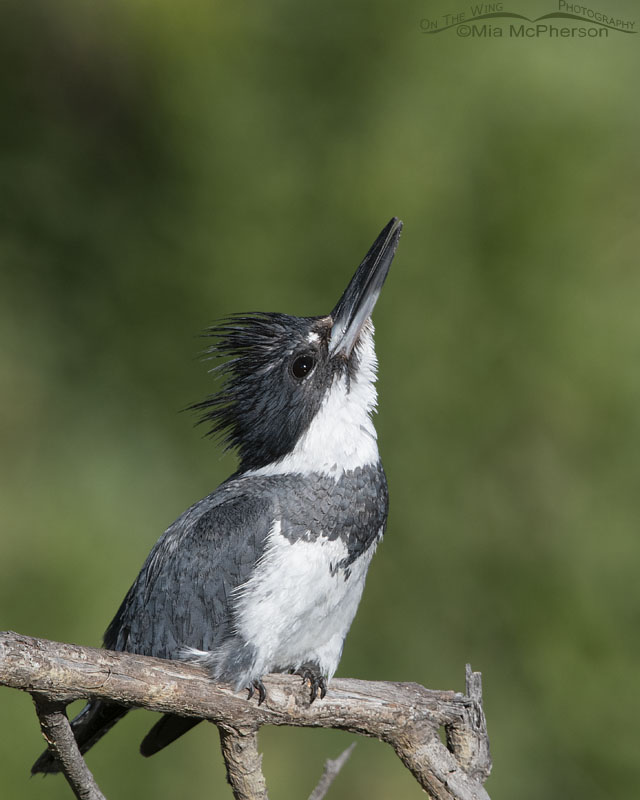
Adult Belted Kingfisher male looking at something in the sky
On June 24th when I photographed the male Belted Kingfisher he spent most of his time preening, shaking and preening some more. I enjoyed seeing him in multiple different poses on his favorite perch.
I took so many photos of the male kingfisher that day that months (and months) later I still haven’t gone through them all. I’ve even included one of the kingfisher when he hovered over the creek for a few seconds during a short break in his preening session.
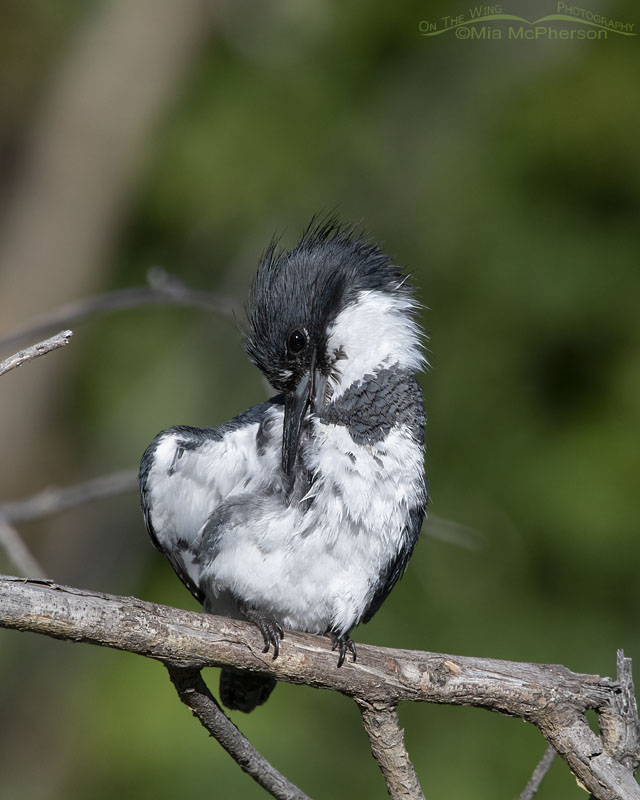
Belted Kingfisher male preening his chest feathers
By the time I was finished photographing the preening session of the male Belted Kingfisher that day the sun was already getting high in the sky. I couldn’t seem to leave him when he was in view and close enough to obtain frame filling images of him shaking his stuff.
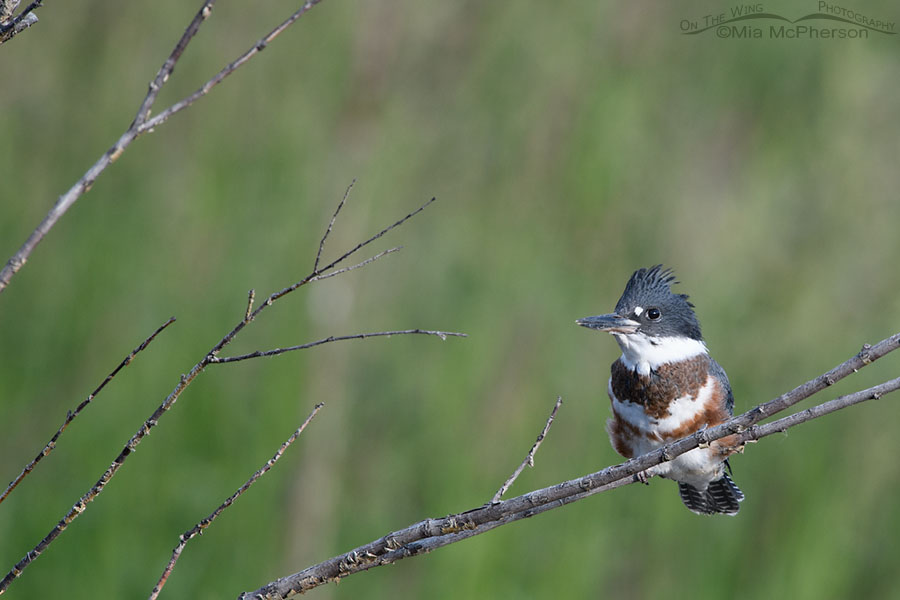
Juvenile Belted Kingfisher perched on a branch across the creek
July 2020
The first time I saw the juvenile Belted Kingfishers was July 1, 2020. On that date the young kingfishers were across the creek and never came in close enough for me to obtain frame filling images of them. I was delighted to see them despite their distance from me.
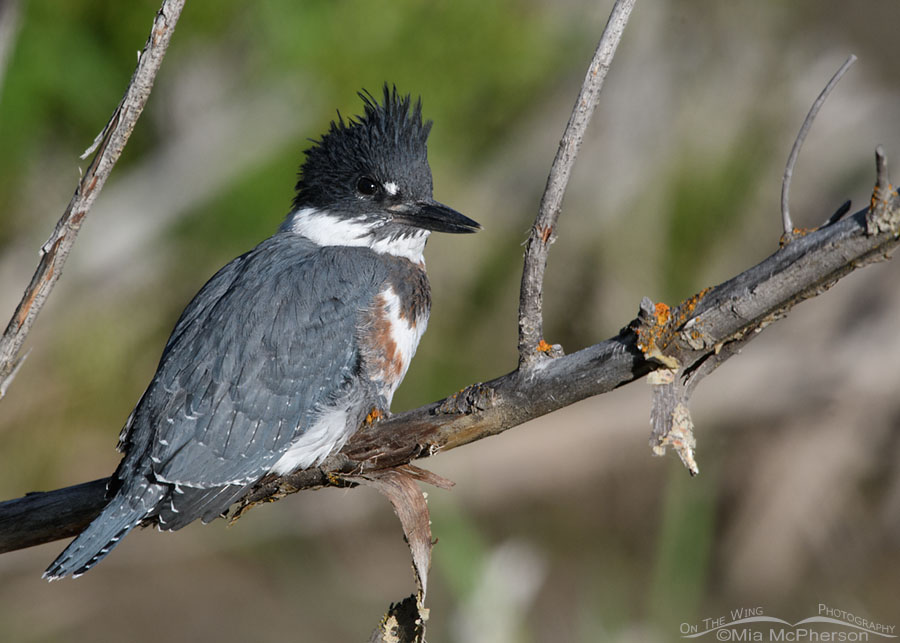
Juvenile Belted Kingfisher looking right at me
The next morning I drove up to see if I could find the kingfisher family again and when I got to the creek there were two of the young kingfishers perched on a branch side by side so close to the road that I couldn’t fit both of them into the frame without taking off my teleconverter. I opted to focus on the individual juveniles instead. I didn’t know how long they would stick around and wanted frame filling images of them.
To both my delight and surprise the immature Belted Kingfishers stuck around, flew off and came back in again. As I sat there I could count five Belted Kingfishers within my range of vision and I had them all to myself for quite a while.
A bit later on I saw a friend slowly driving up behind my Jeep and motioned him to move forward. Through our open windows I was able to tell my friend that there were five Belted Kingfishers in the area.
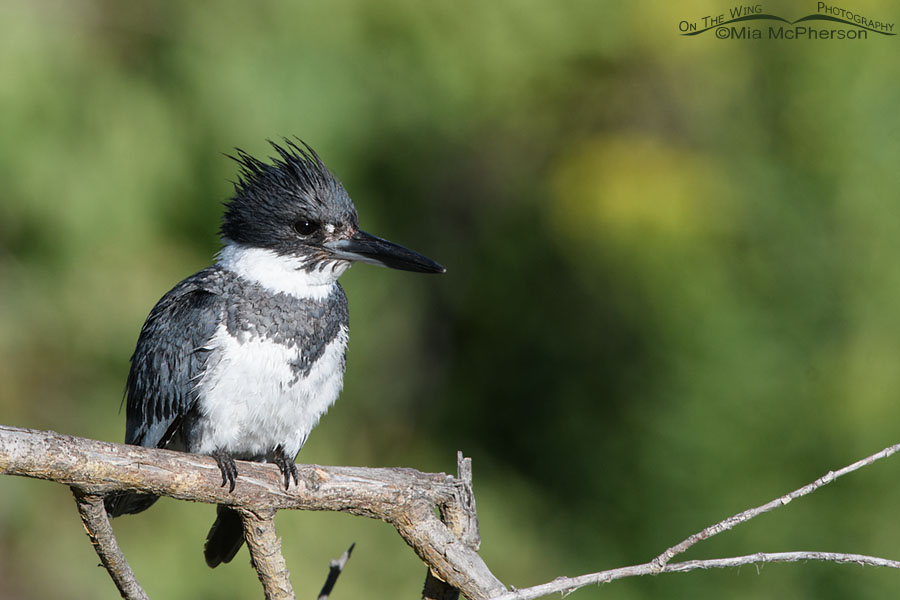
Adult male Belted Kingfisher watching over his young
The male Belted Kingfisher perched on his favorite branch and watched over his young when he wasn’t actively out hunting prey. When he did catch a fish the young kingfishers swarmed him. That always happened at a distance that day so my photos of their interactions weren’t up to my standards.
The adult female may have also been there that day because at least two of the birds didn’t approach me closely enough to identify them and because I had birds within range of creating frame filling images I didn’t scope out the others in the area.
I saw the Belted Kingfishers on July 6th but they kept well away from the edge of the road. I watched as the male fed the young birds from across the creek. Watching them from a distance was educational though and I appreciate being able to gain knowledge about this charismatic species.
On the 8th of July the male kingfisher came in closer and I was able to photograph it reacting the to presence of a Barn Swallow that set the male into defensive mode. The swallow ever directly attacked the male kingfisher but it did fly over him very closely. After the swallow left the male flew to a tree across the creek where one of the juvenile kingfishers joined him and begged to be fed.
I knew my time with the immature Belted Kingfishers would soon be running out. Young Belted Kingfishers start catching their own fish about seven days after they fledge. The parents feed them for about three weeks then after that they may strike out on their own or stay in the area of their nest indefinitely.
It wouldn’t be the last time I would see swallows and the kingfishers together.
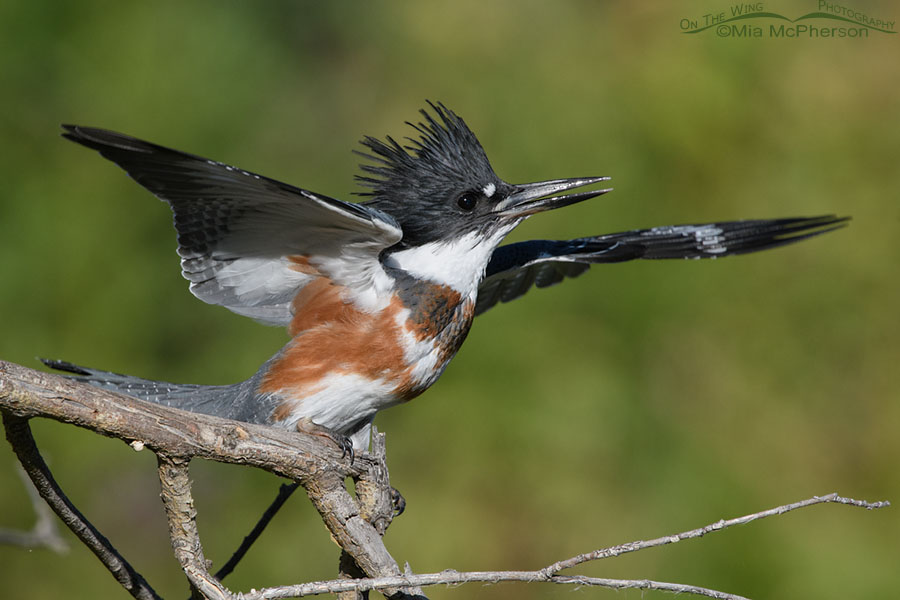
Juvenile Belted Kingfisher being agitated by a Barn Swallow
The next time I was able to take photos of the juvenile Belted Kingfishers was on the 23rd of July. The activity became hot and heavy when an adult, Barn Swallow dived bombed the young kingfishers. It may have been more than one Barn Swallow buzzing the kingfishers but the action was so fast it was hard to keep up. I don’t know why the swallows were diving at the immature Belted Kingfishers. They certainly aren’t a threat to swallows or their young.
The swallows kept the young kingfishers on the tips of their tiny little toes while I photographed them. One of the juvenile Belted Kingfishers moved to a low stump which seemed like a move made to avoid the swallow’s dives but even there the swallows were relentless until the immature kingfishers flew away and up the creek.
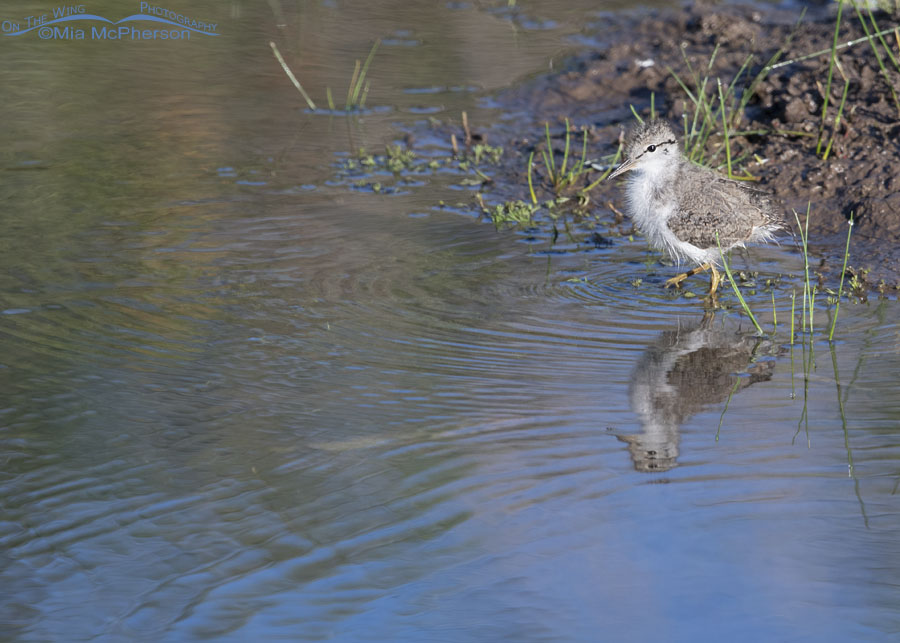
Spotted Sandpiper chick and its reflection
When I wasn’t observing or photographing the Belted Kingfisher family I had other subjects to photograph because a family of Spotted Sandpipers were also in the same area. There were times when the young of both species were visible to me simultaneously. The bird photography gods were smiling on me.
The Spotted Sandpiper chicks were also a well-timed blessing because after July 23rd I didn’t see the young Belted Kingfishers up close again.
July 29th was the last date that I was able to get close up images of the male Belted Kingfisher. It was a spectacular session with the male kingfisher because I saw him catch fish several times, he preened, and he was dive bombed by more swallows. I took hundreds of photos of him that morning. Some were funny, some showed great behavior. In some he simply looked wonderful.
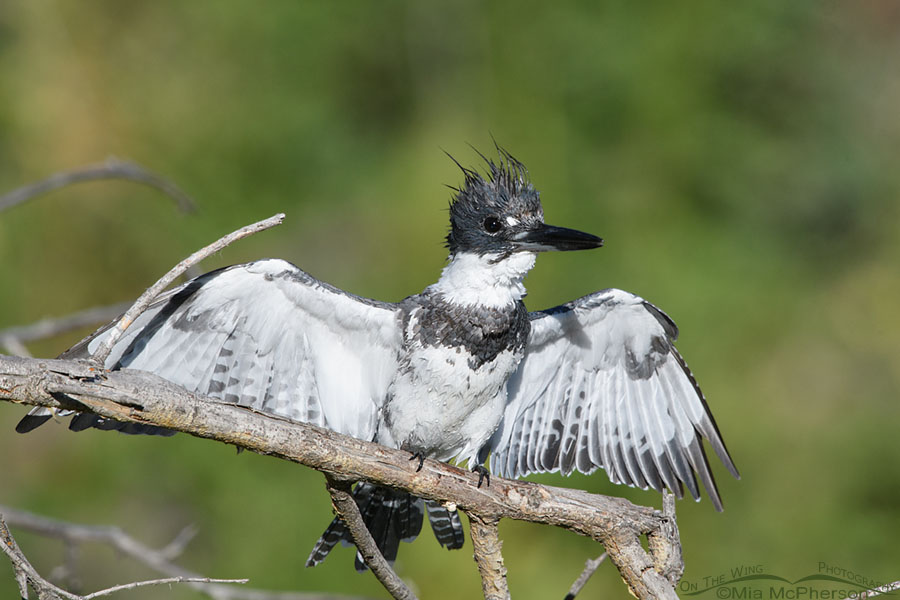
Adult male Belted Kingfisher on alert
I had an amazing time photographing the Belted Kingfisher family over their breeding season this year and learned so much about them. The kingfishers were amusing, enchanting and entertaining and I enjoyed every minute with the Belted Kingfisher family.
Life is good.
Mia
Click here to see more of my Belted Kingfisher photos plus facts and information about this species.


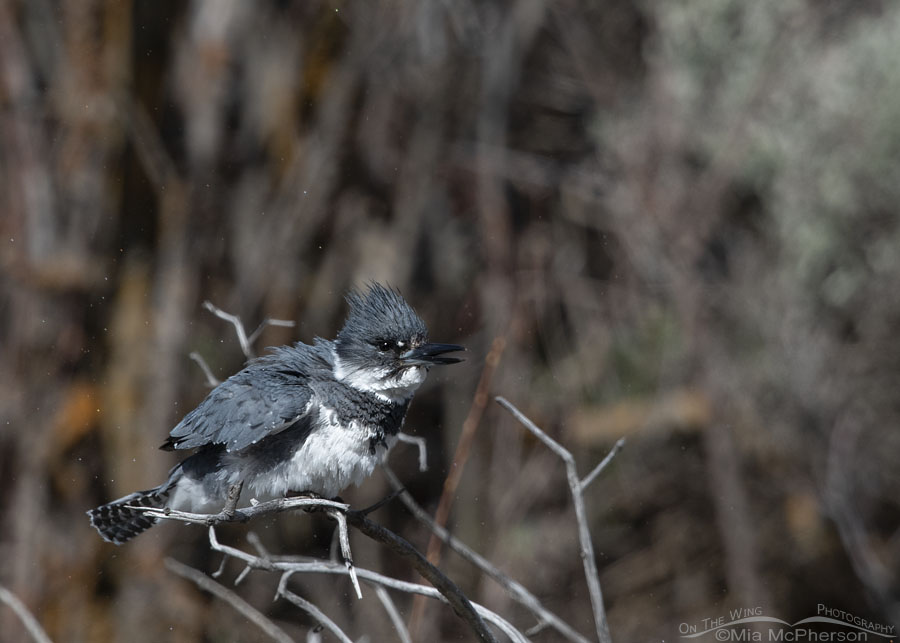
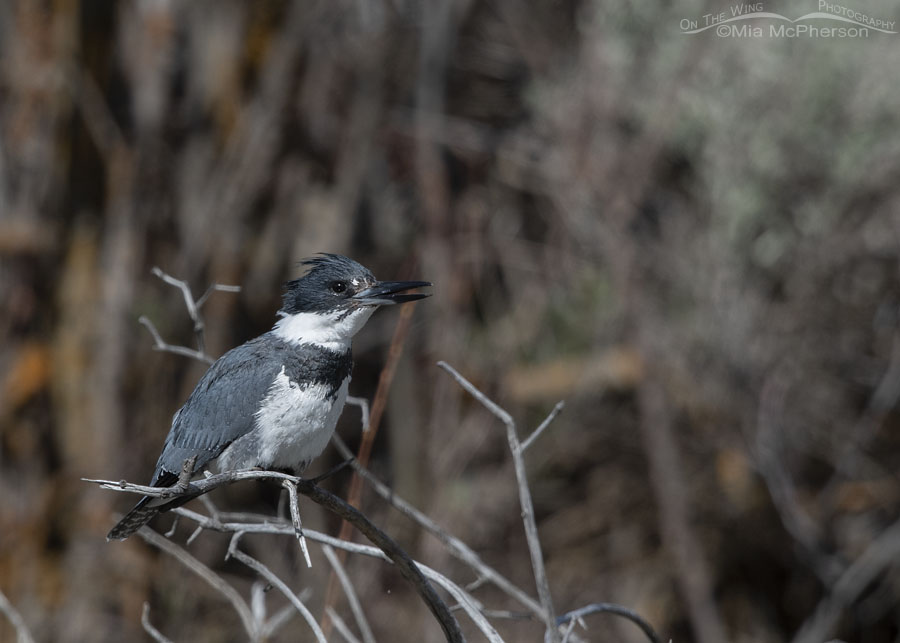
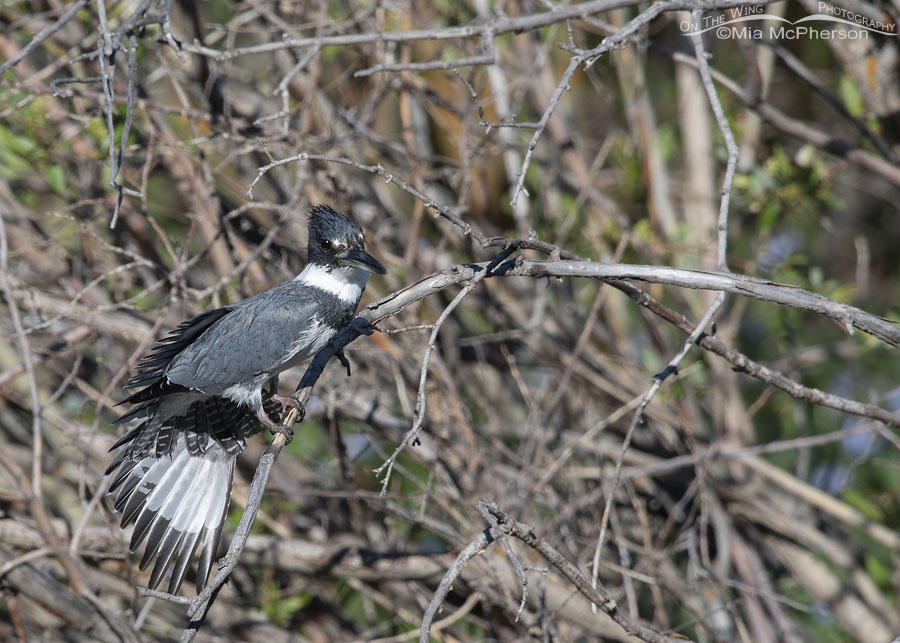
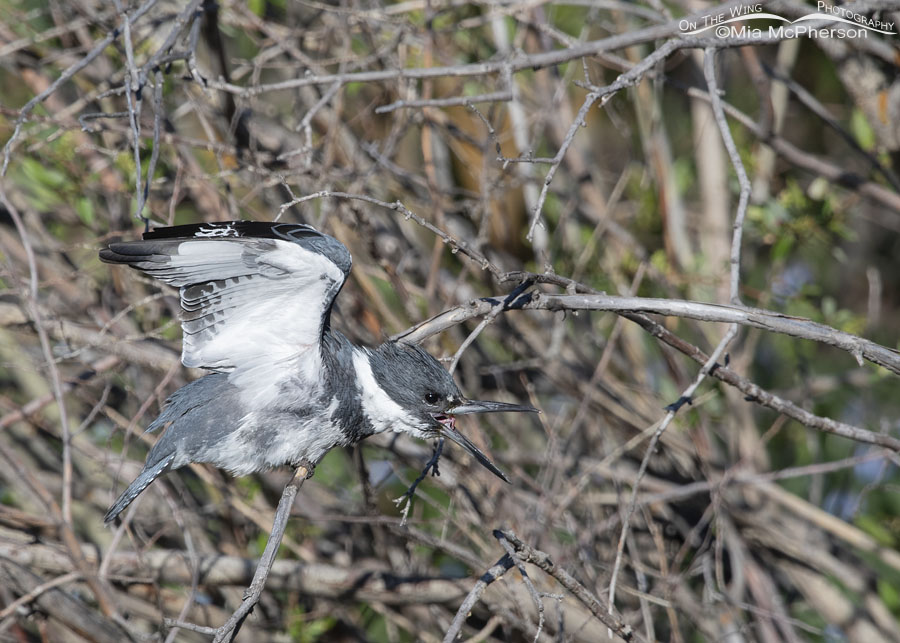
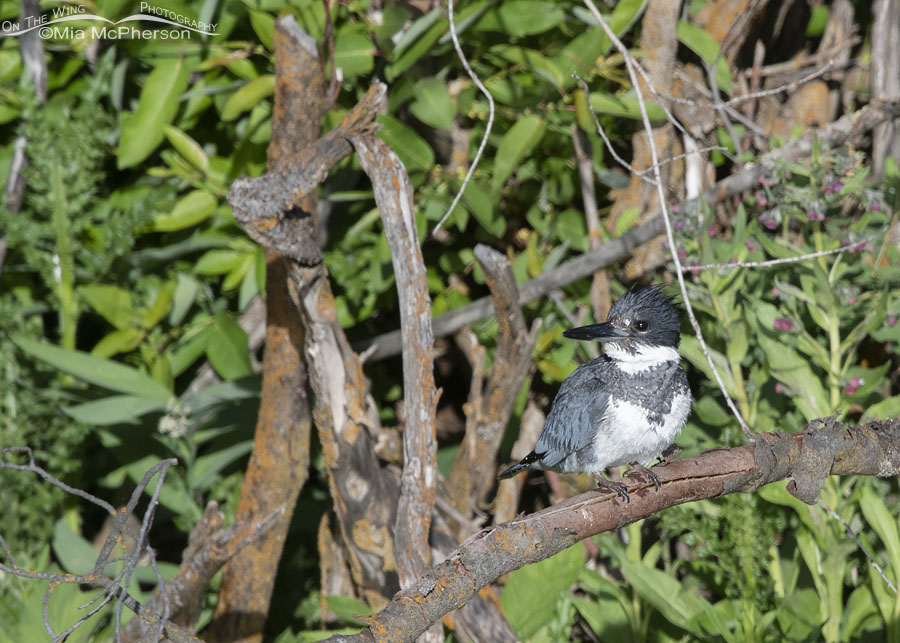
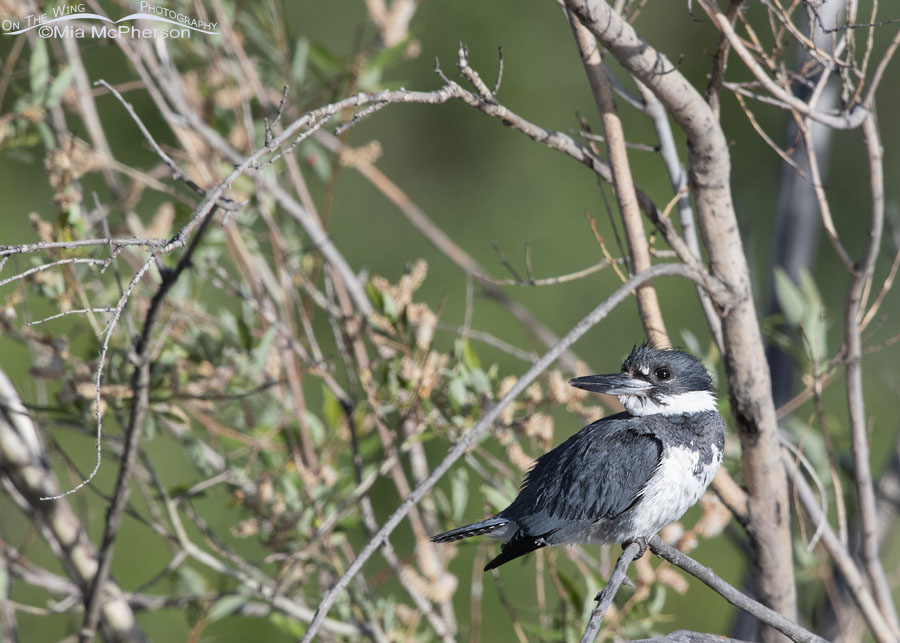
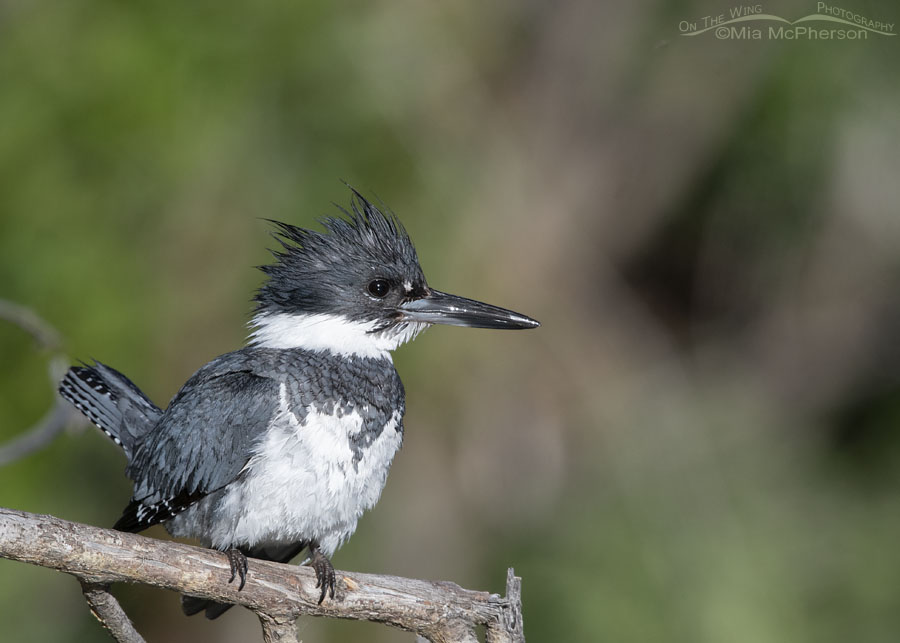
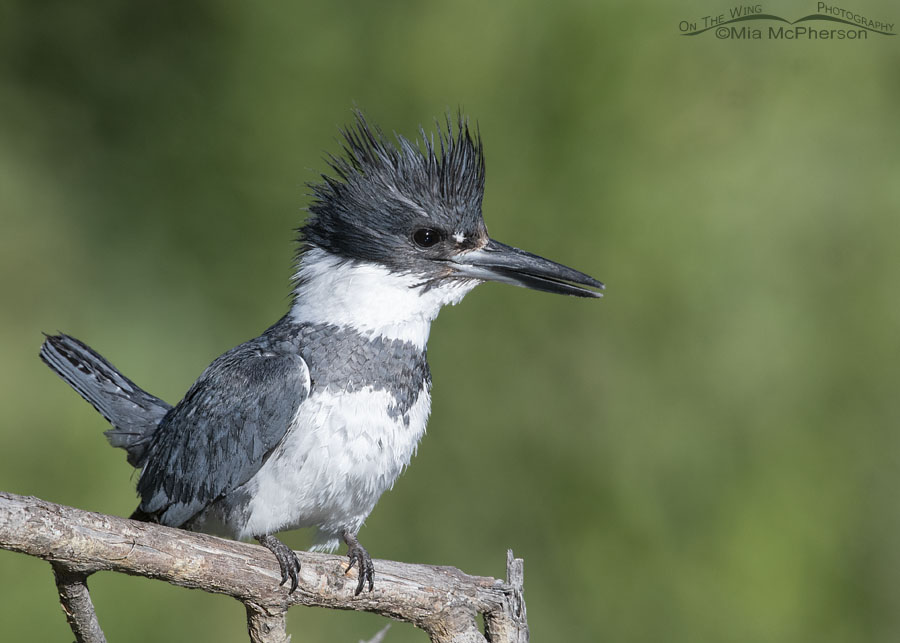
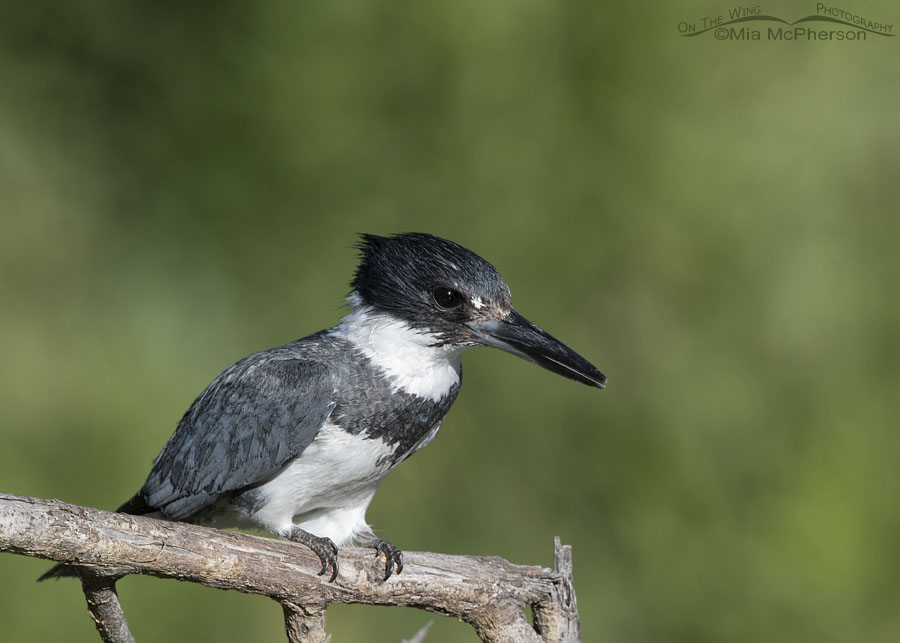
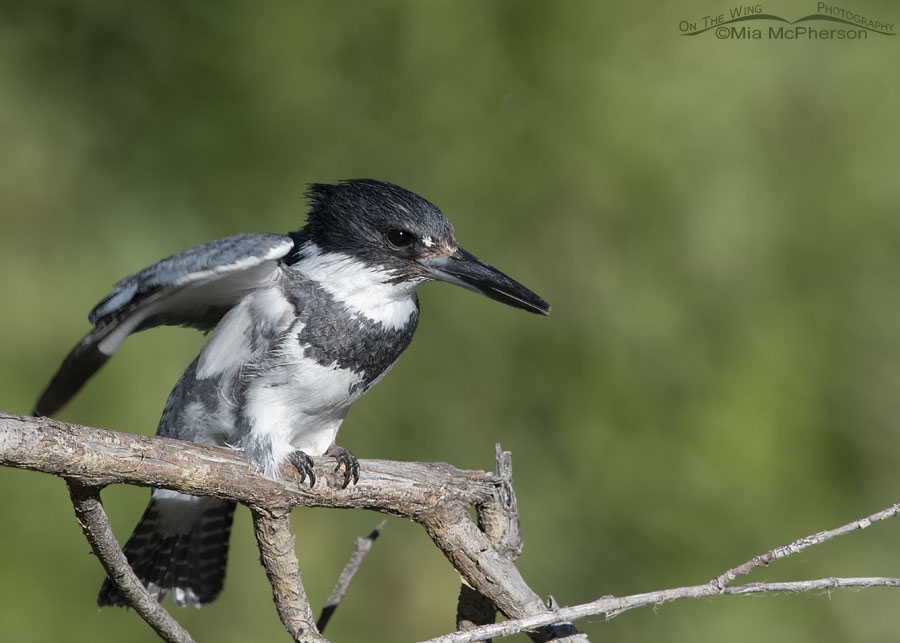
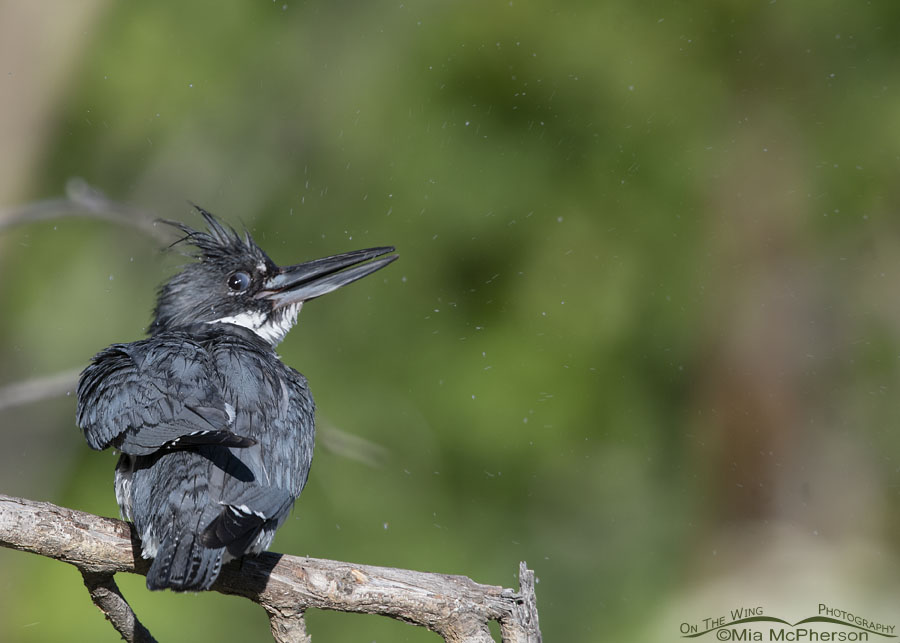
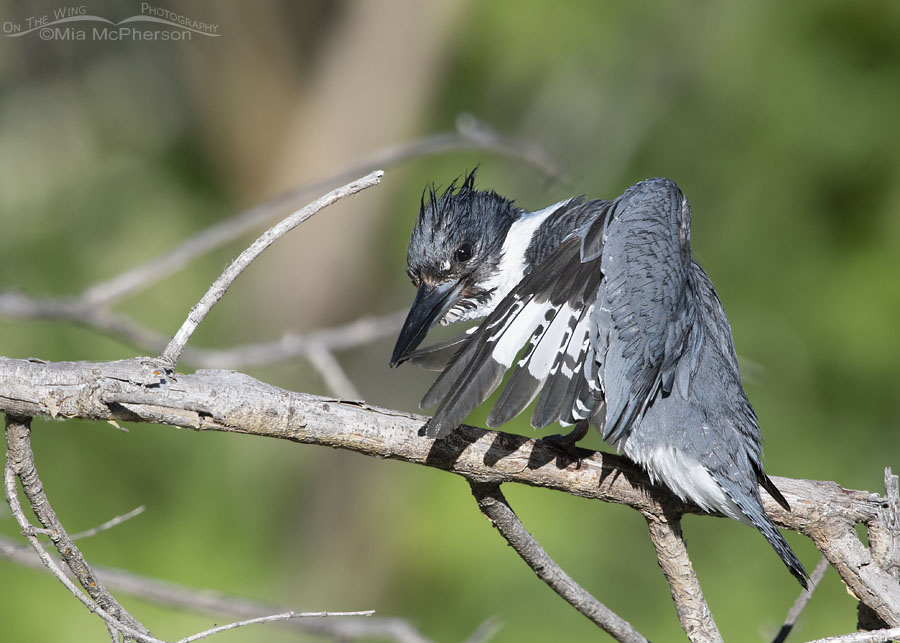
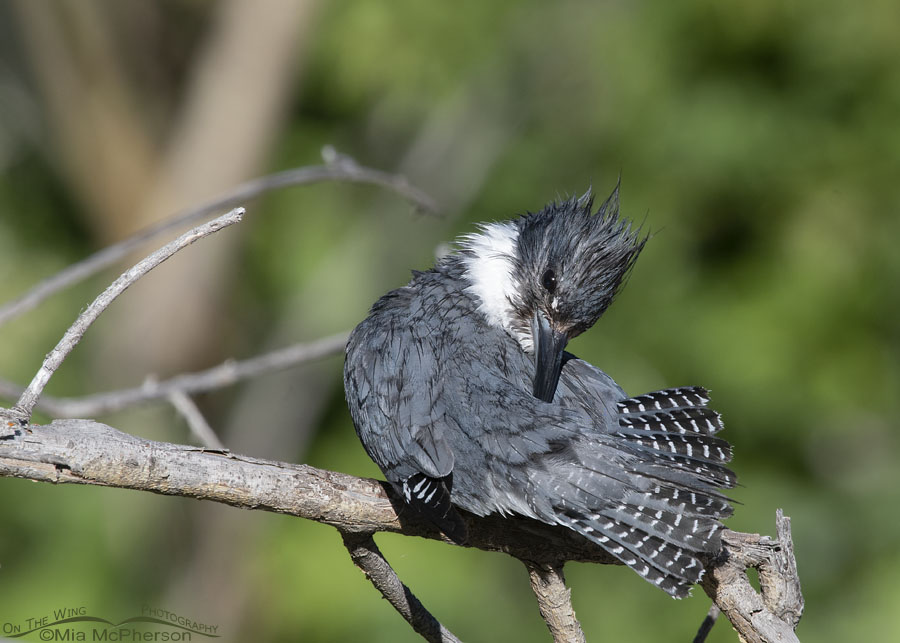
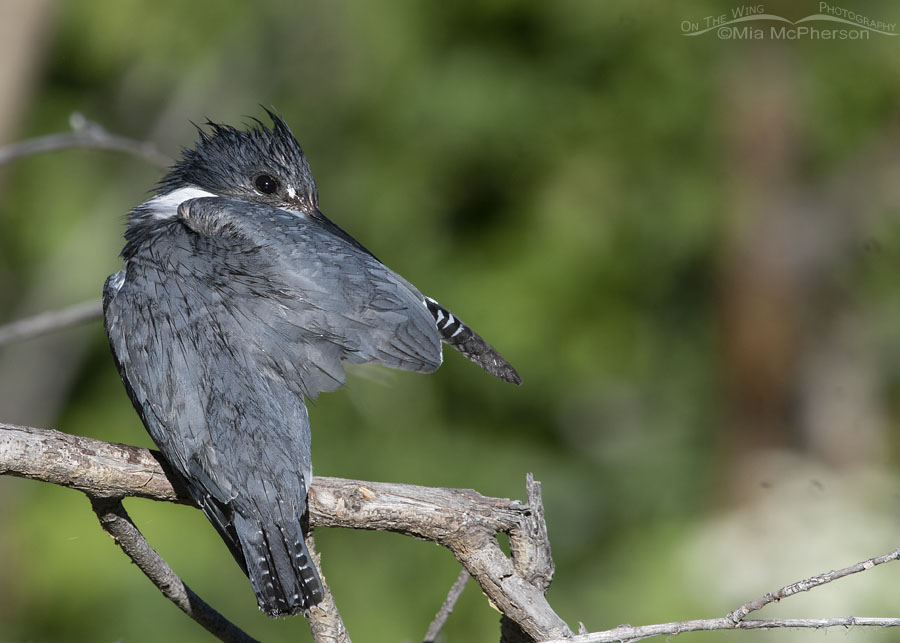
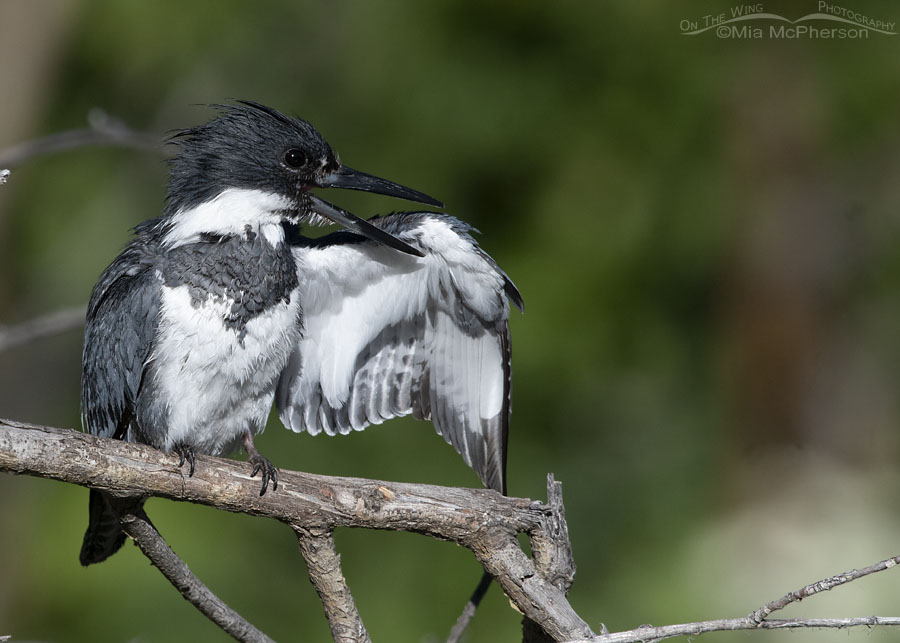
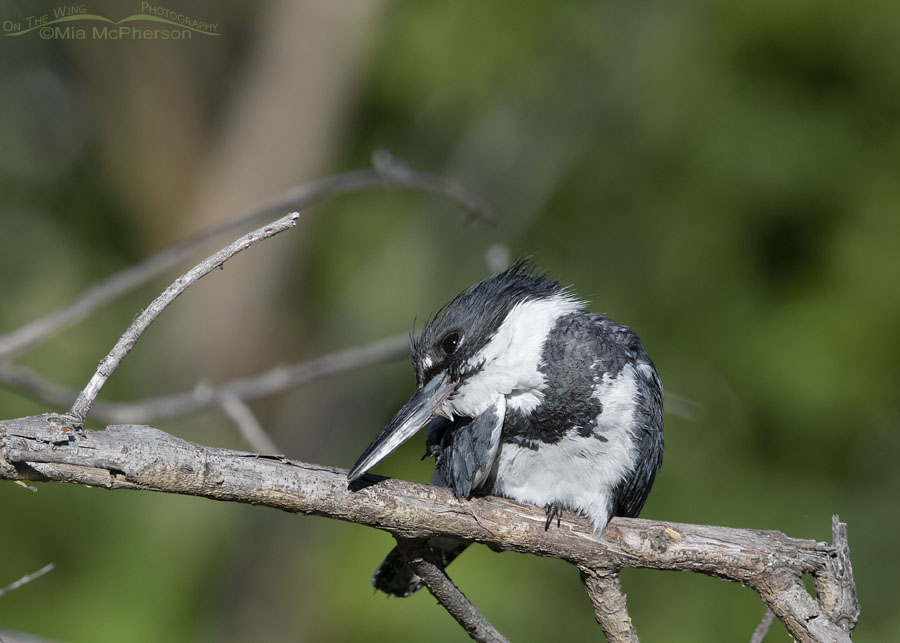
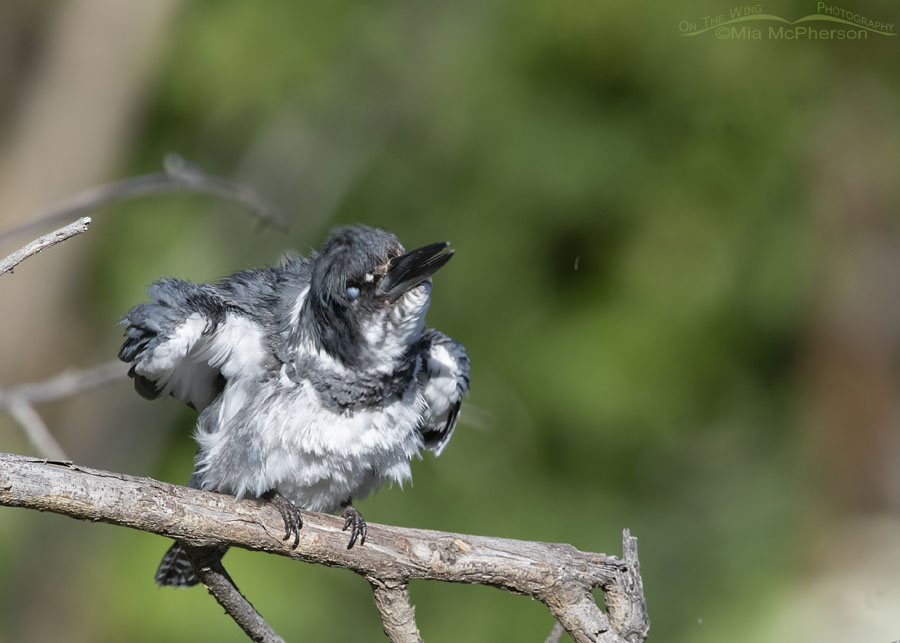
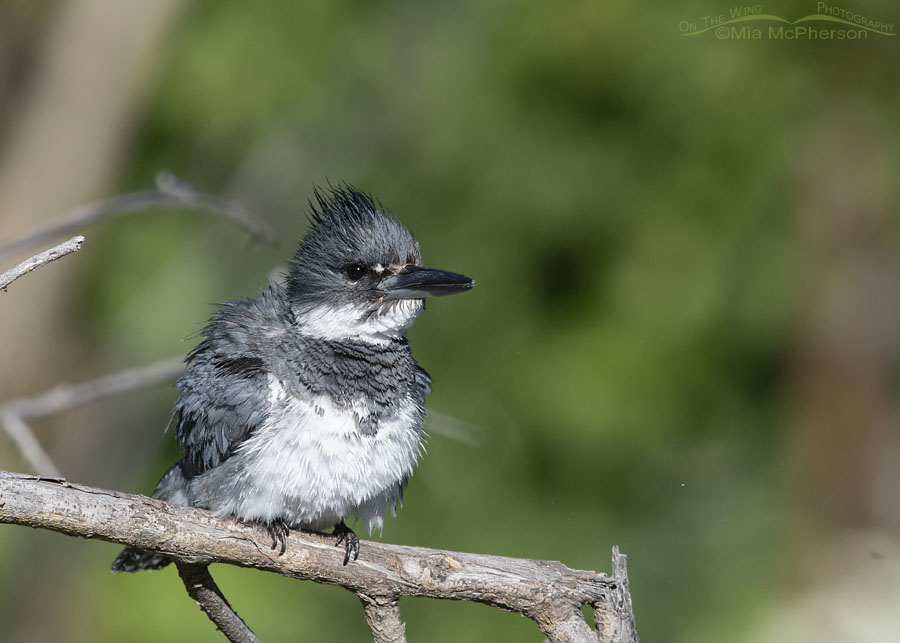
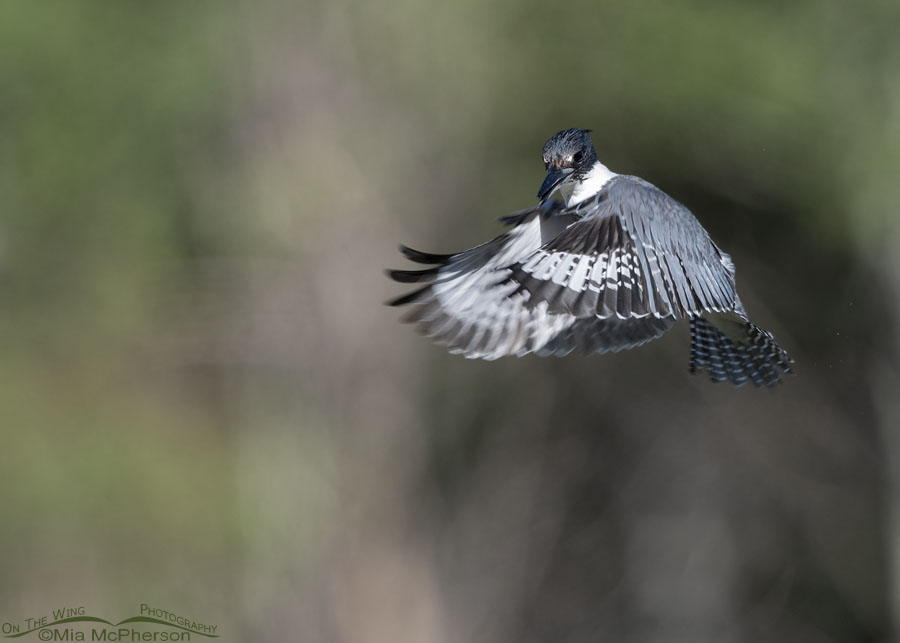
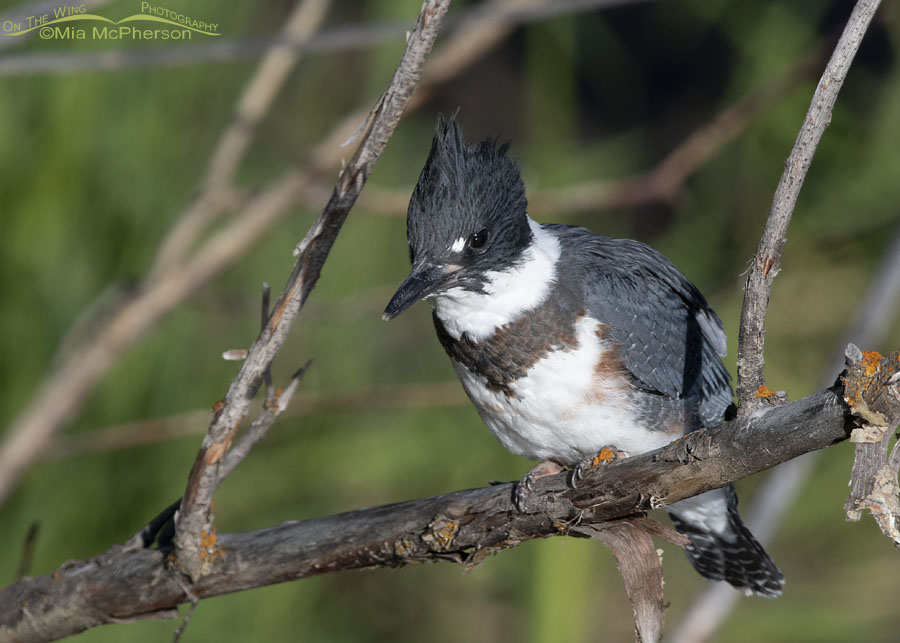
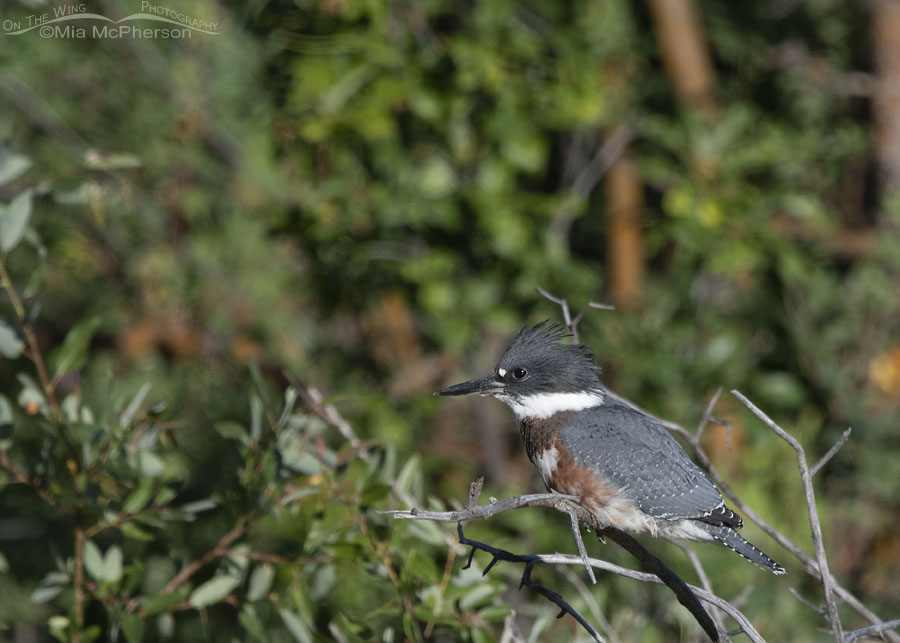
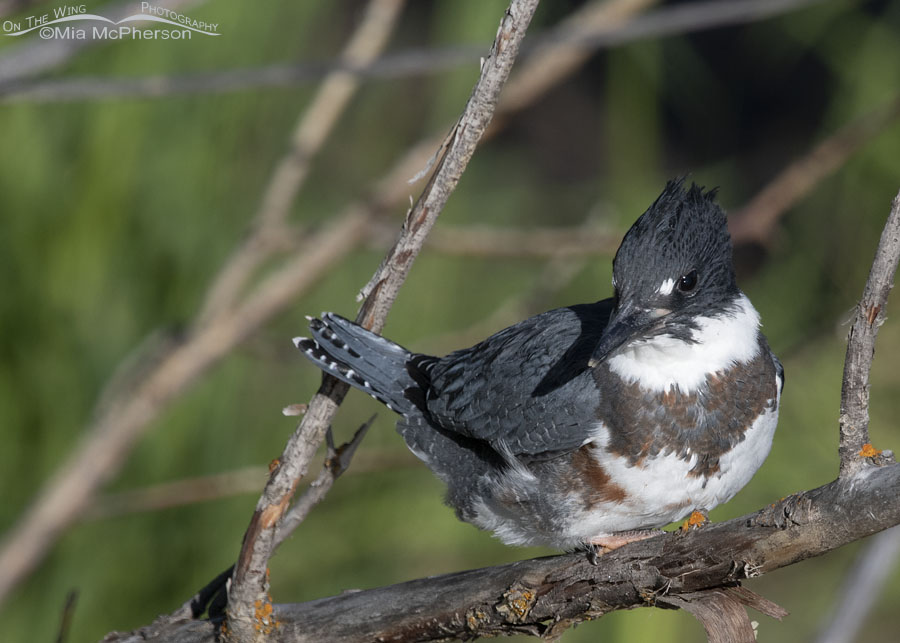
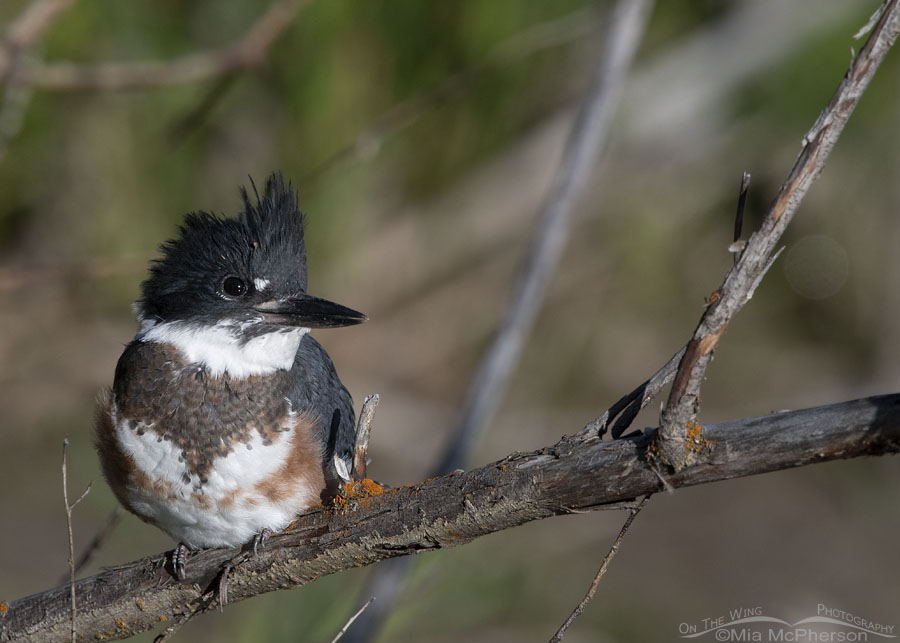
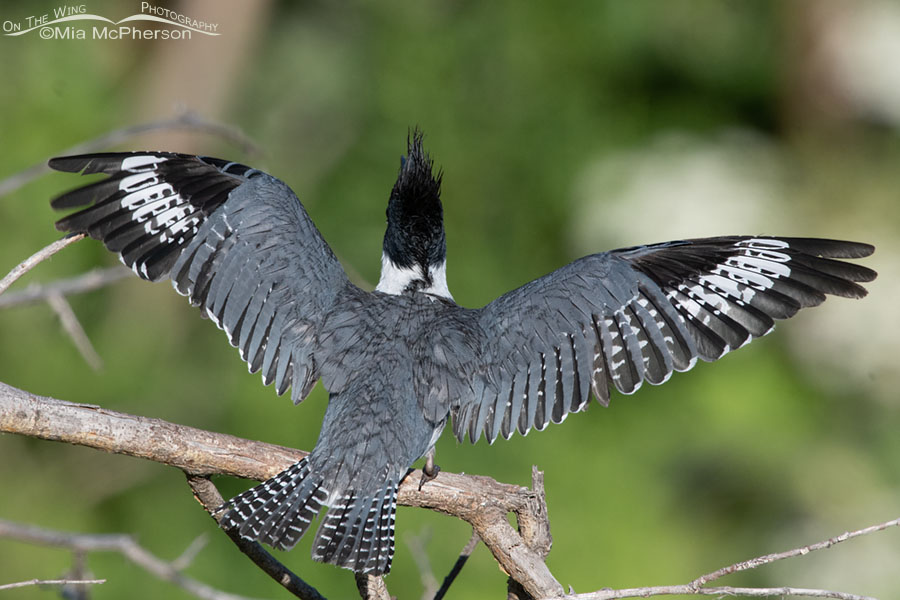
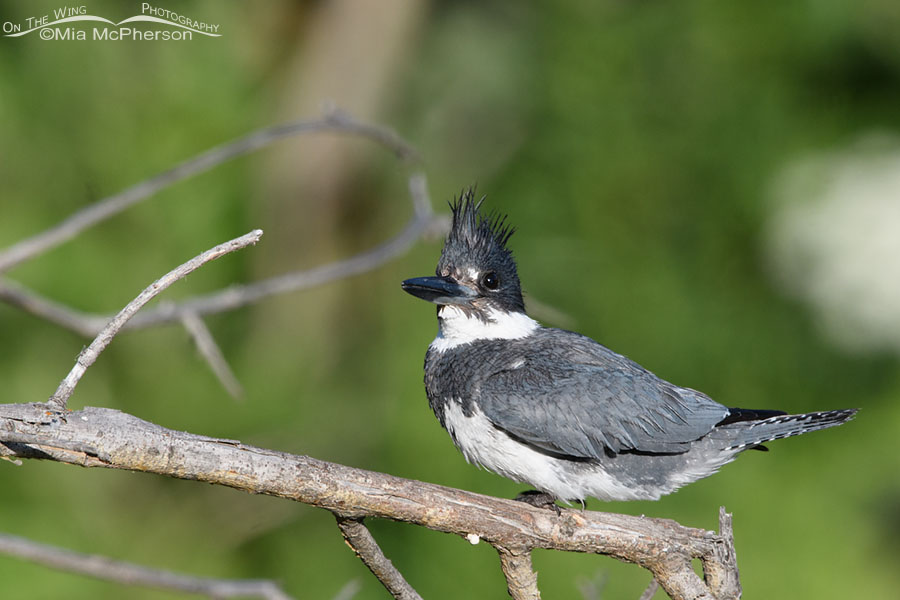
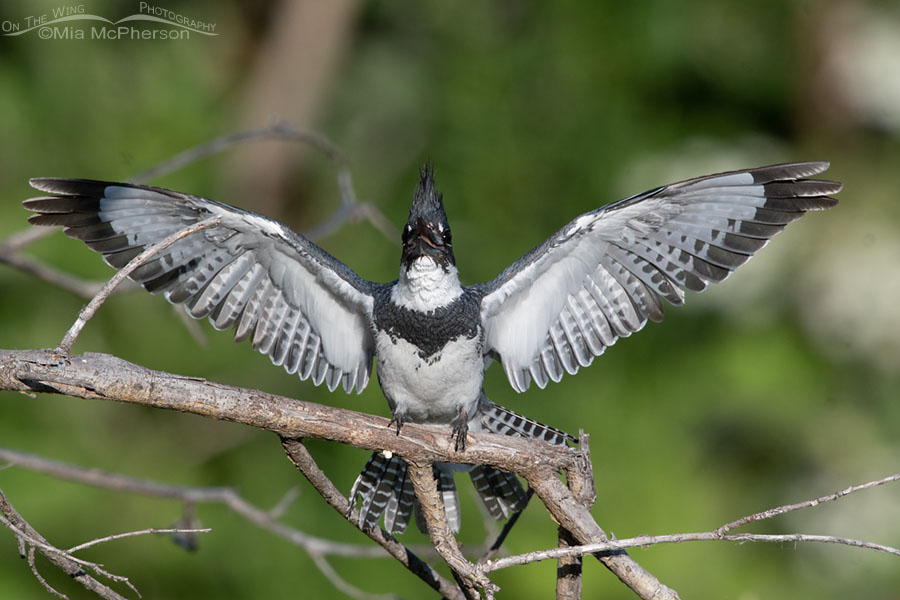
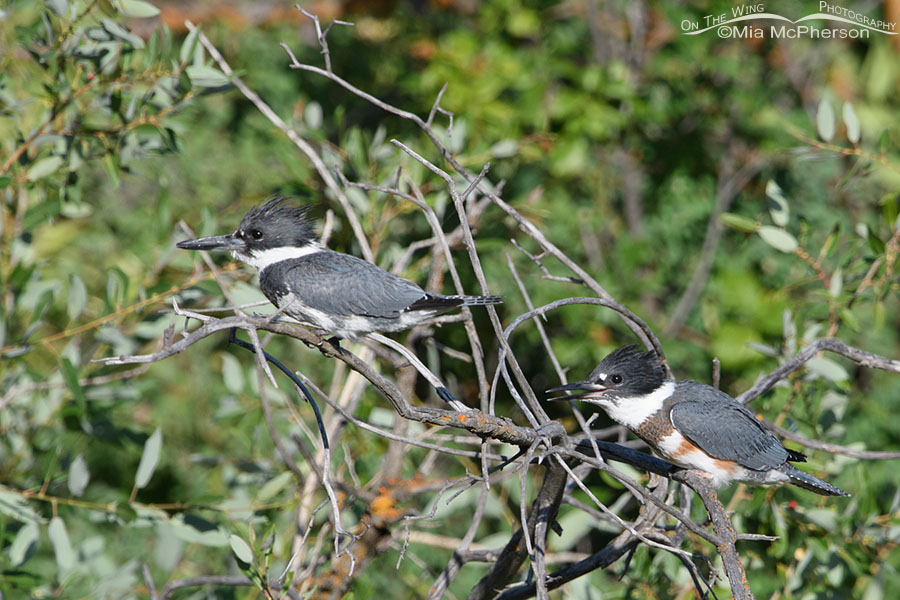
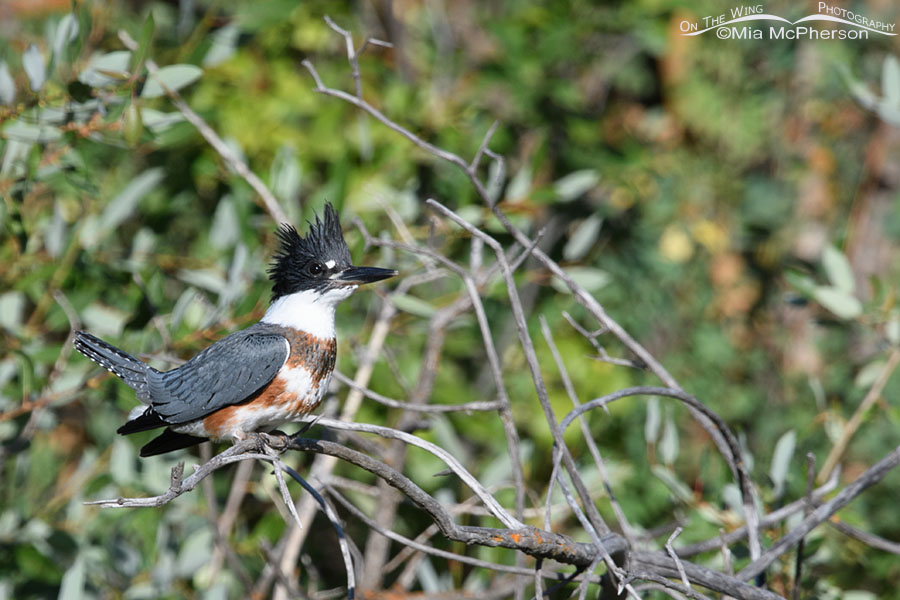
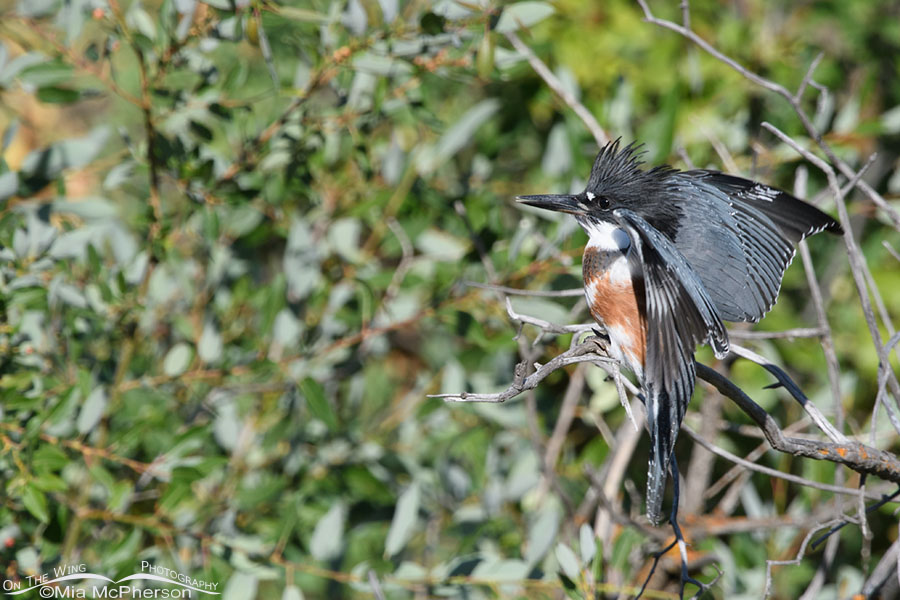
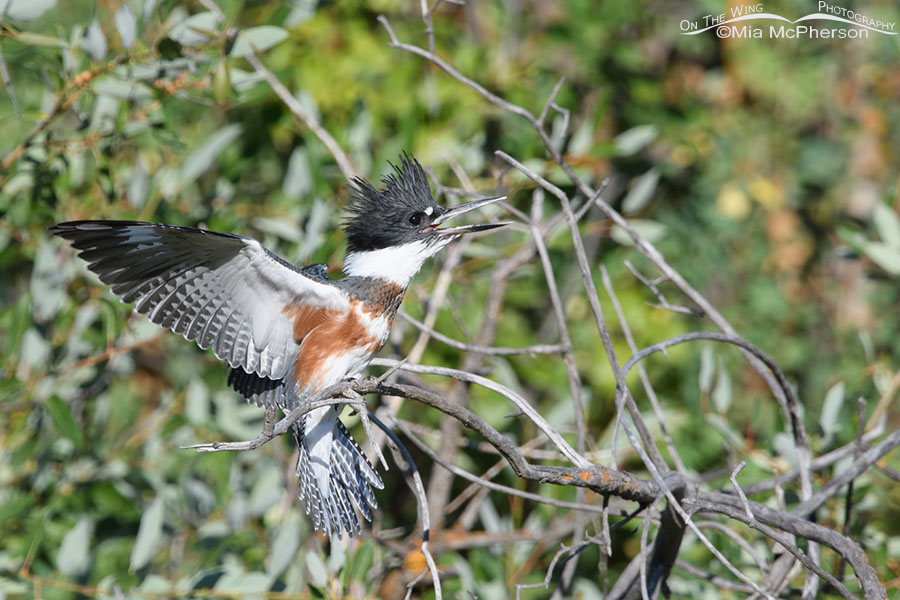
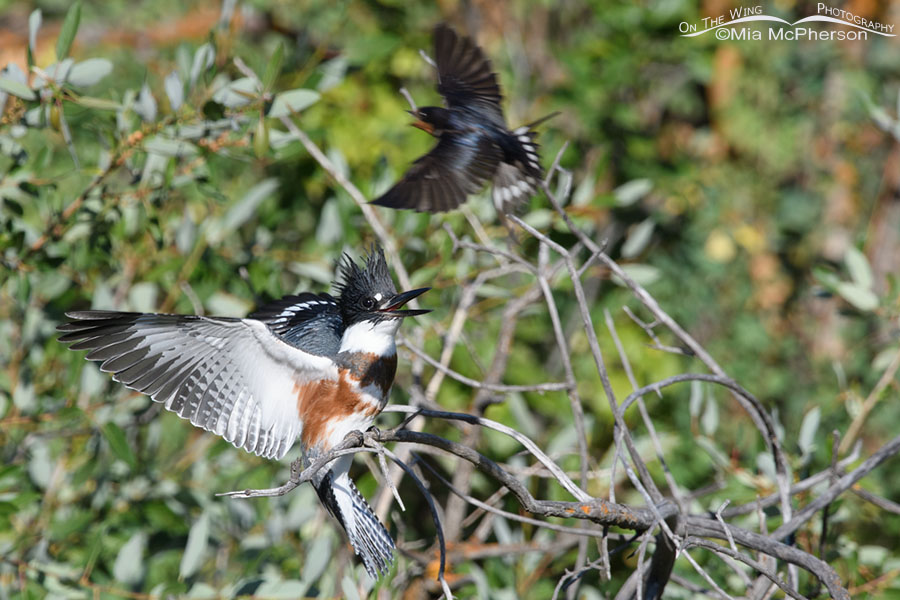
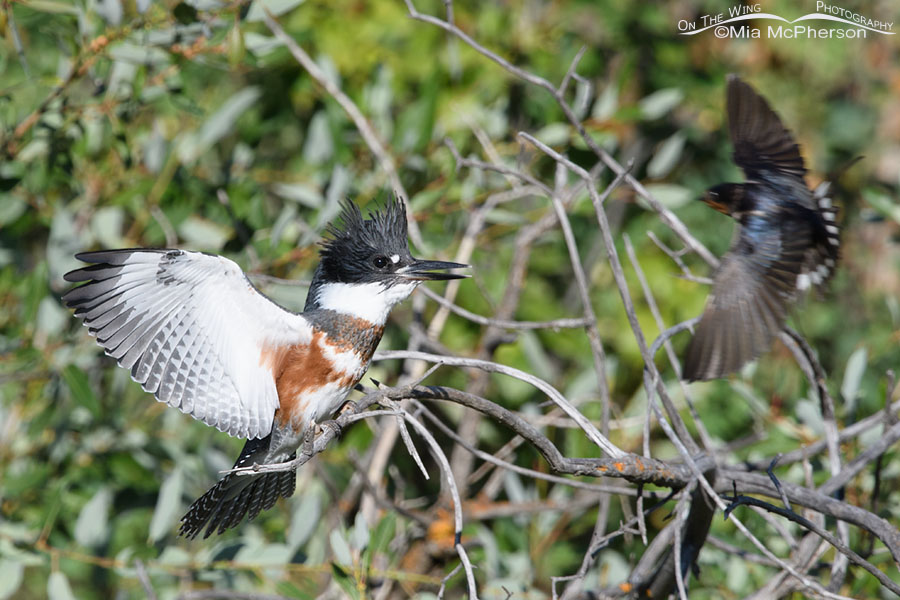
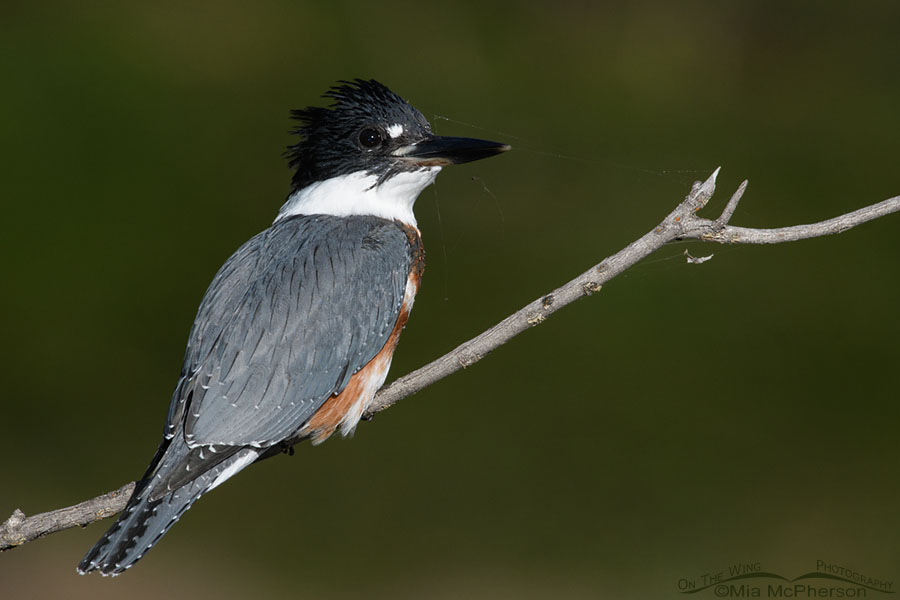
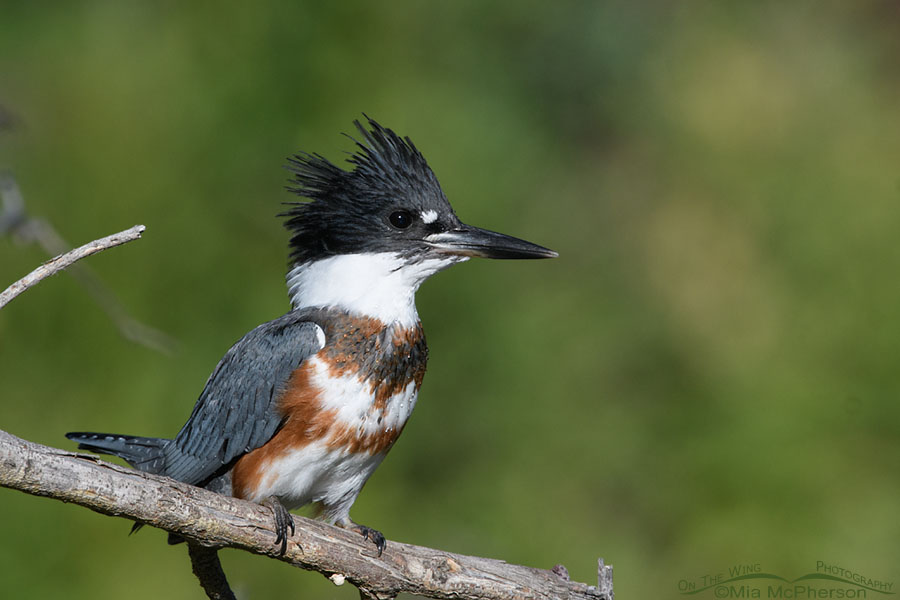
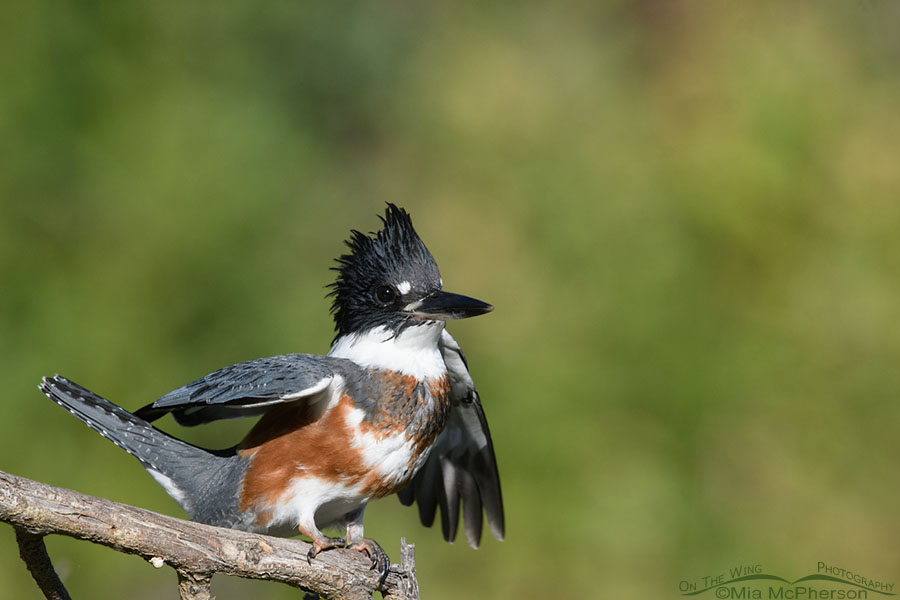
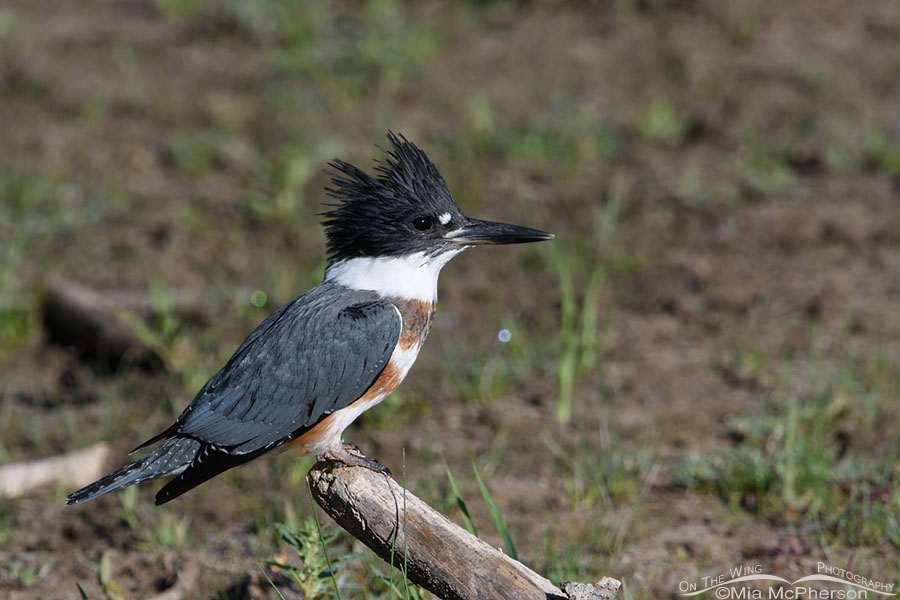
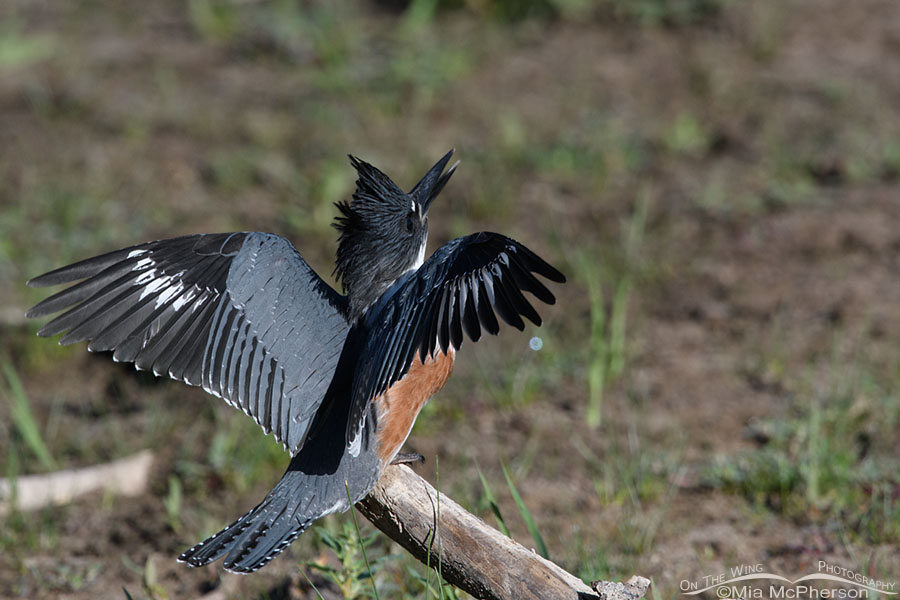
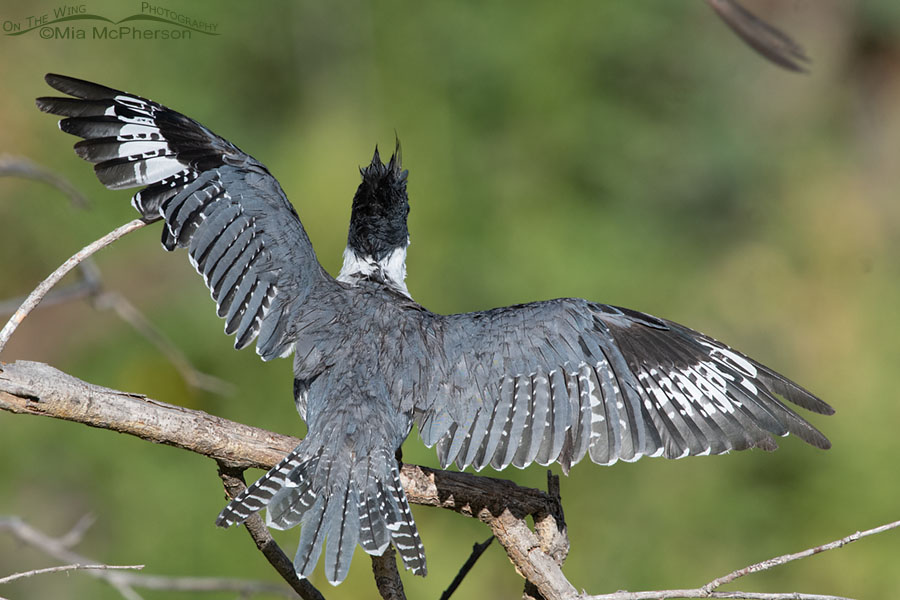
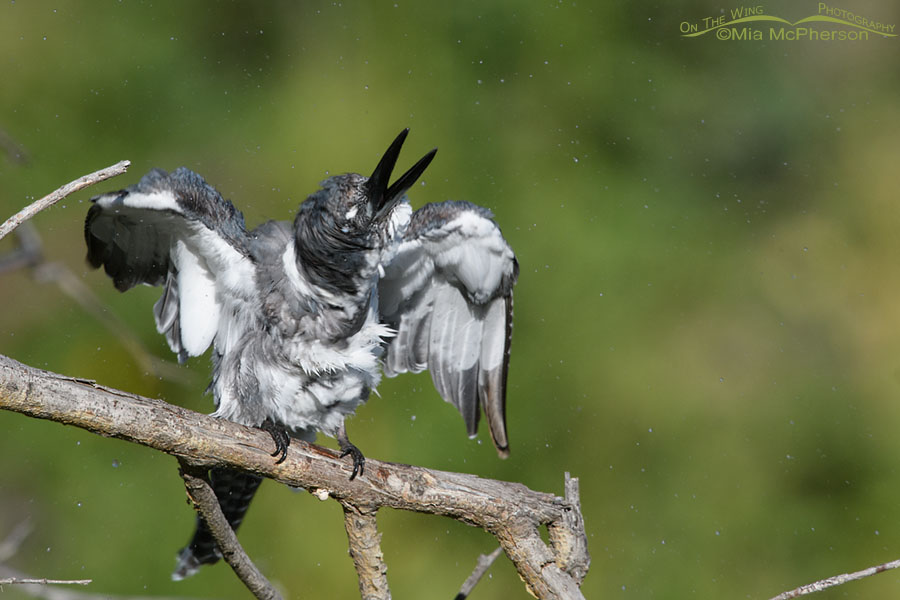
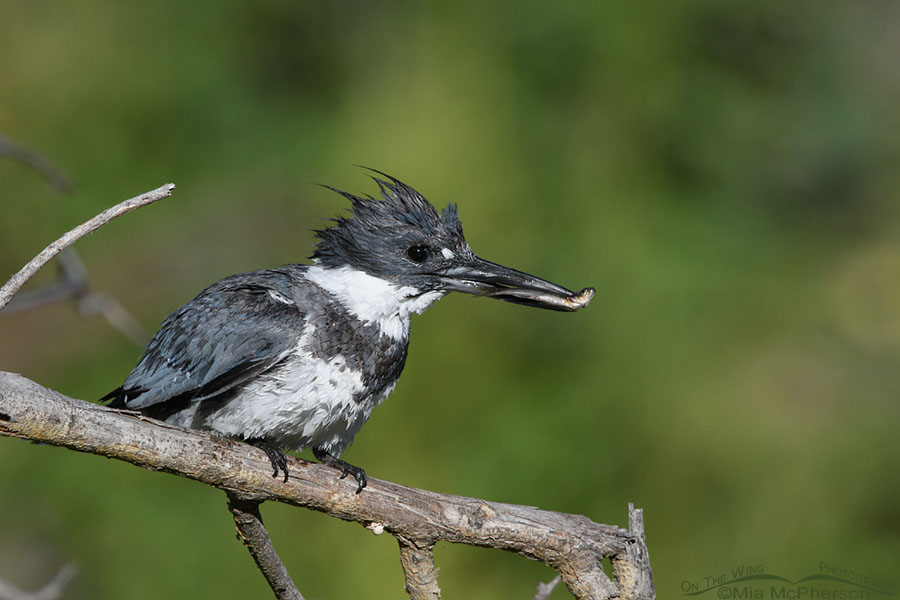
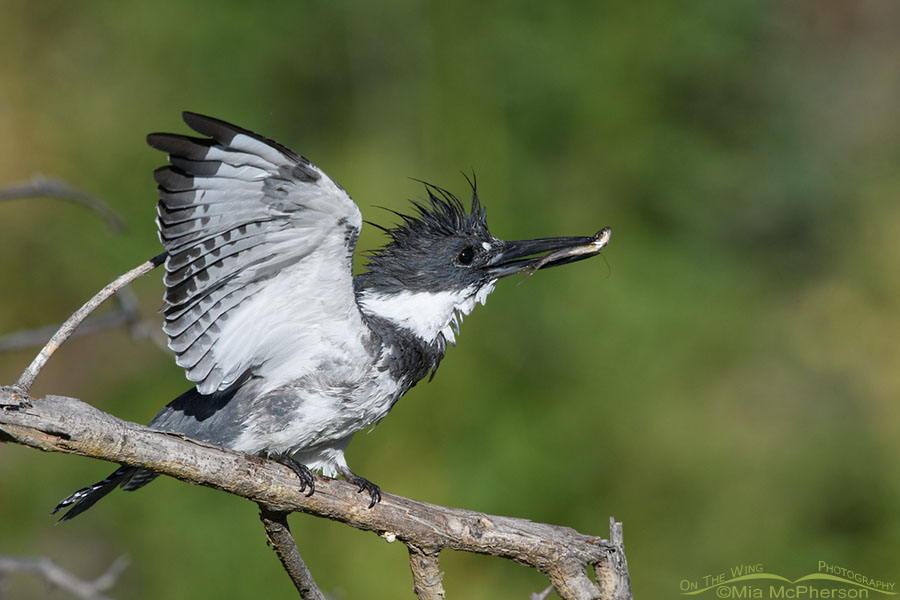
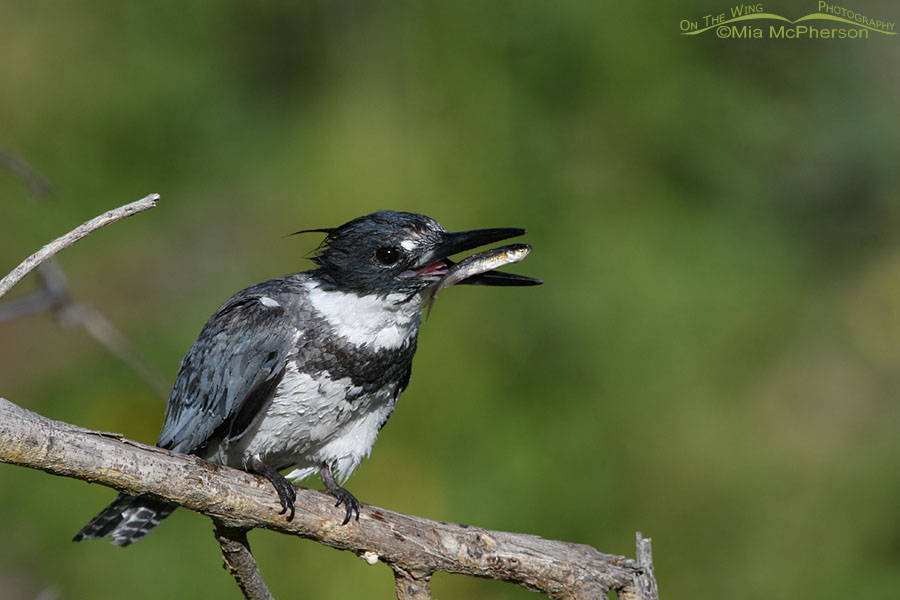
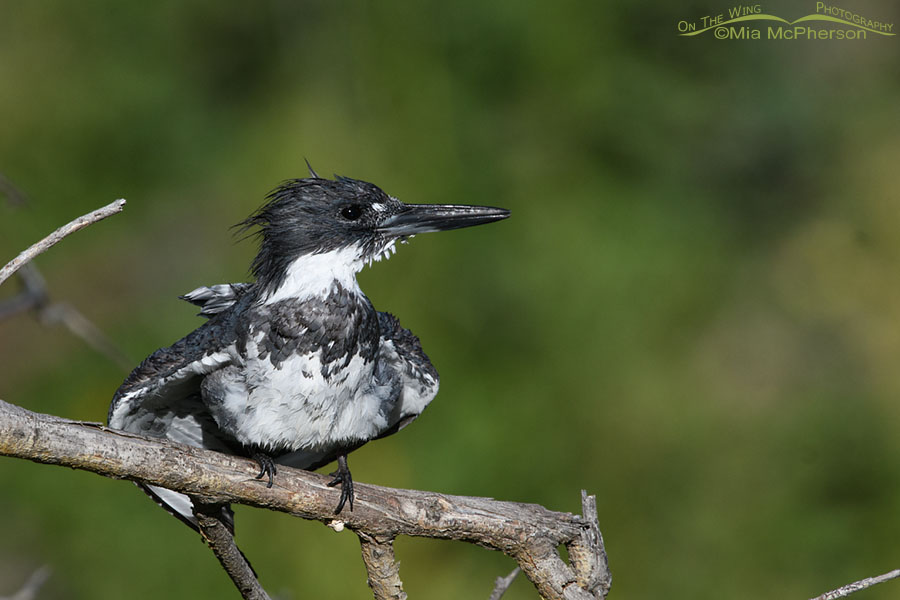
WOW! What a great Christmas gift! This series of Kingfisher pics is flat-out astounding. I will look at these shots, and read your notes, again and again. Thanks Mia.
Wonderful views of the kingfishers in action! As a kid in New Jersey I found their nest hole in a sandy bank along the river, but do not think I have ever seen an immature bird. By the time they get down here to Florida for the winter I suppose they have developed full adult plumage. I have rarely been able to get close enough to one for a decent image. Good observation about the length of the bill. I am seeing several mockingbirds with bill deformities.
Enchanting is the perfect word to describe your Belted Kingfisher journal. Thank you for all your hard work to include so many delightful photographs in this post. I’m grinning ear to ear right now. 😀
Amazing collection of Kingfisher images Mia, Merry Christmas to you and yours and stay safe.
Wow! I will have to revisit multiple times to take it all in. I wonder if they stay for the winter. That stream might not freeze over. I hope they are there next year too!
What a wonderful series, Mia! Merry Christmas and Happy New Year!
Huge thanks.
These images are the very best kind of heart balm and fill me with awe and delight.
Fantastic! So happy for you! I believe this was one of your “nemesis” species, as it is for most bird photographers. Hopefully, the pair will return and you will get more opportunities to enjoy them.
I wish you a blessed Christmas, good health happiness and great birding in 2021. Hopefully it will be a better year for all of us. Stay safe.
Absolutely a wonderful series of gorgeous birds
Merry Christmas to you and yours.
My nemesis. OMGosh…..what a wonderful series of photos. How lucky you were to have the opportunity to photograph them. Loved them all.
Thank you for all the wonderful photos this year and your splendid descriptions. You brighten my days.
Merry Christmas. Happy New Year, too.
This is an amazing series of excellent photos and descriptions of Belted Kingfishers! Thanks for sharing.